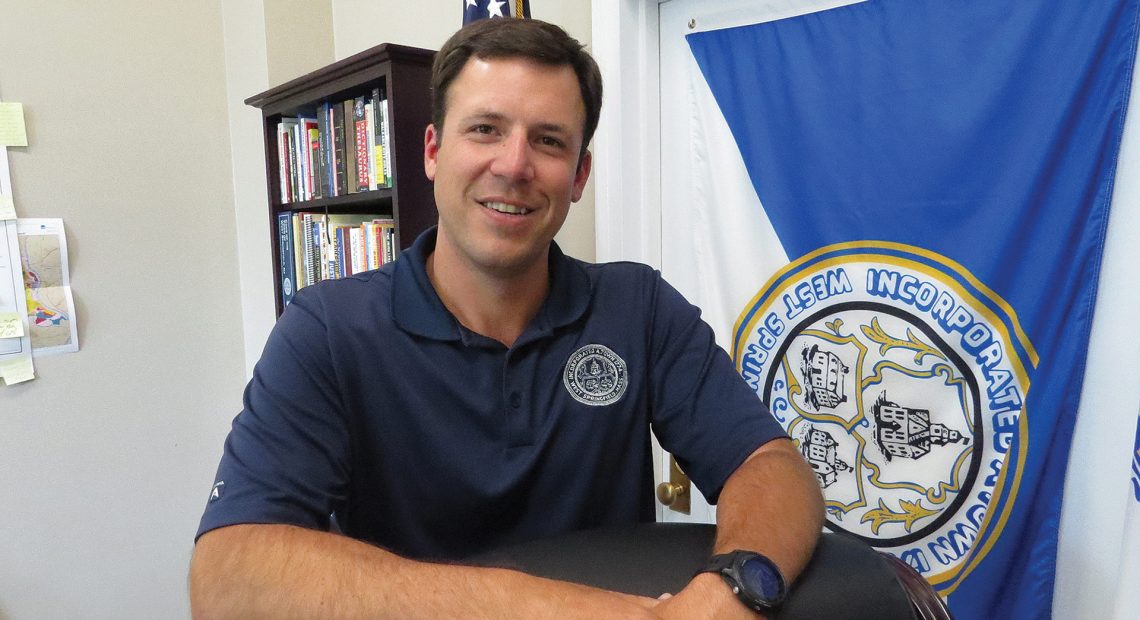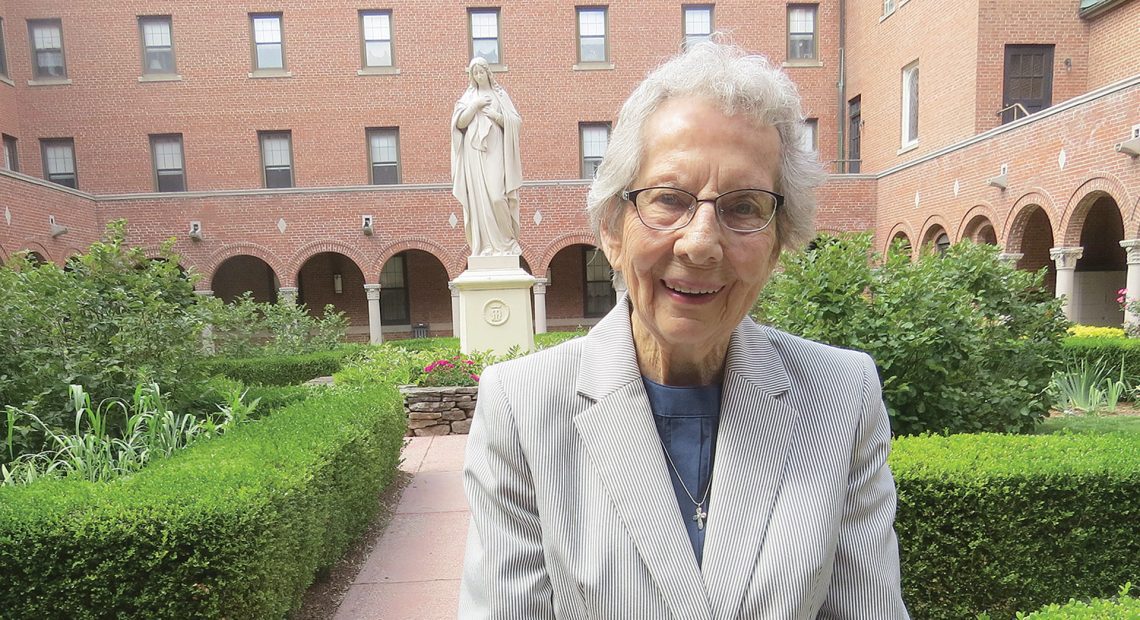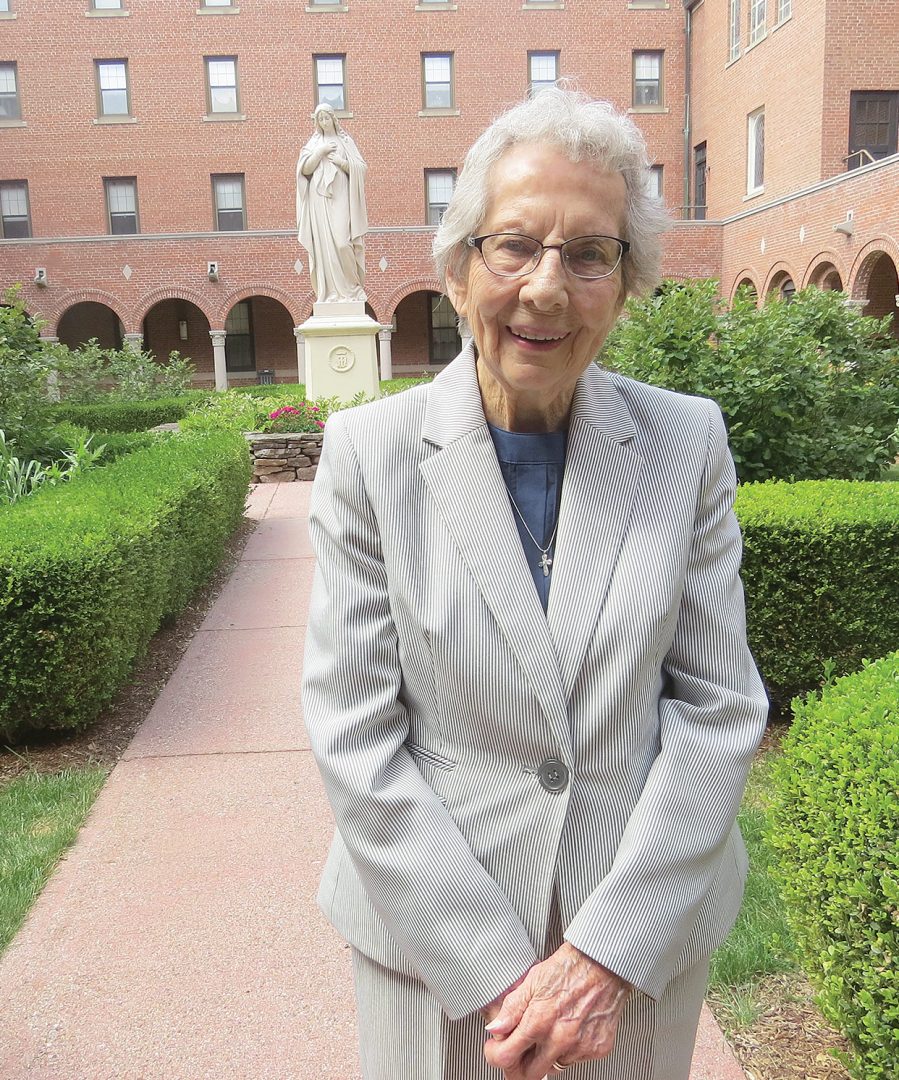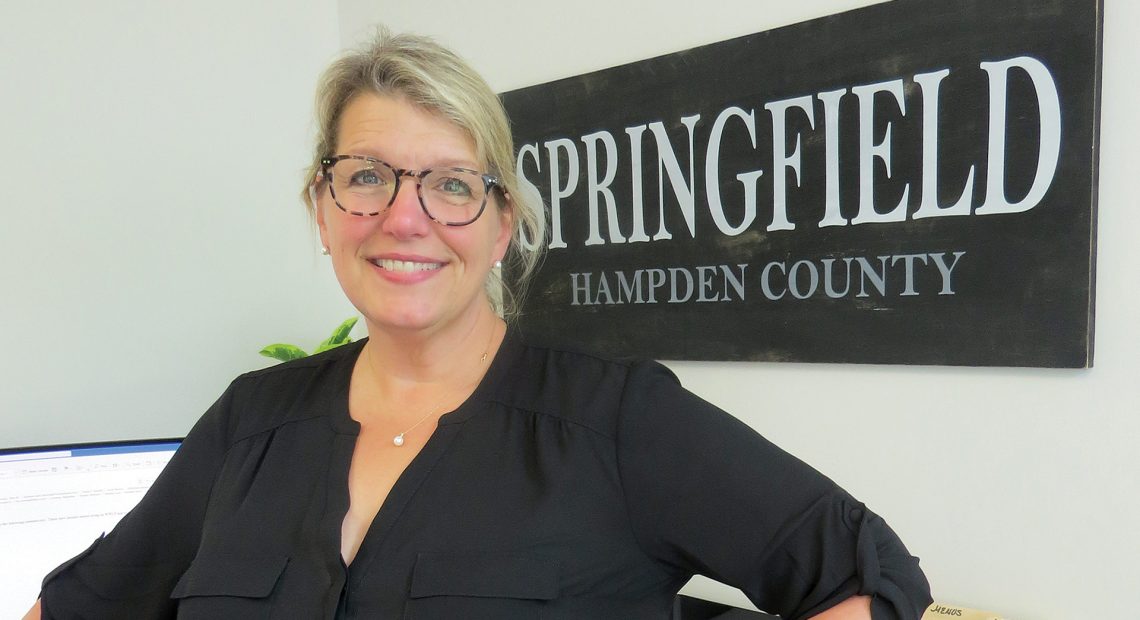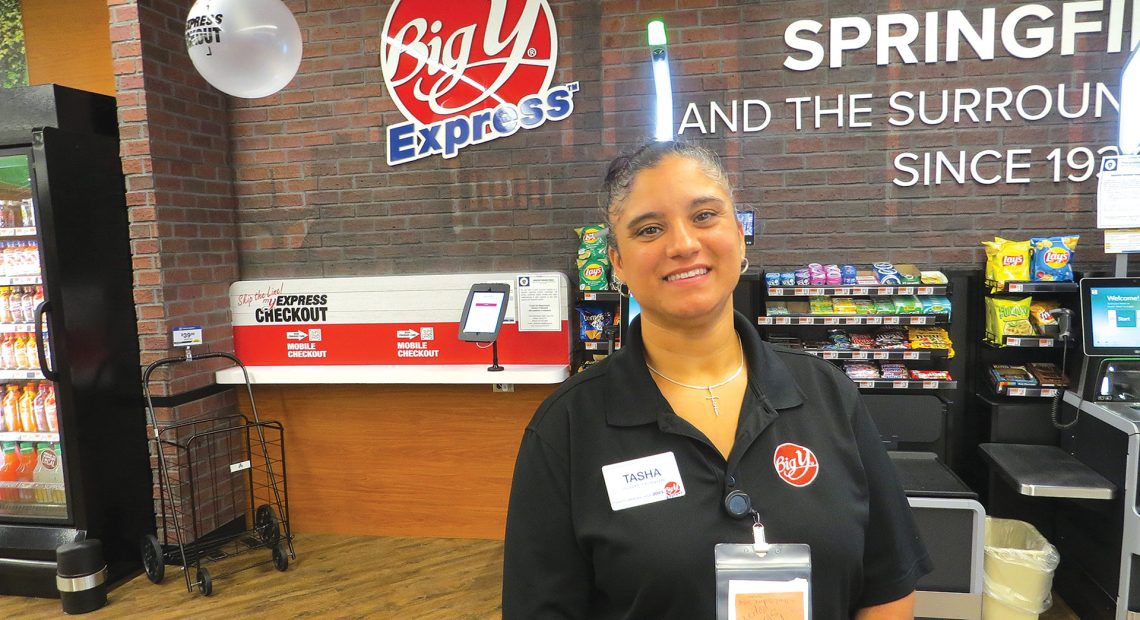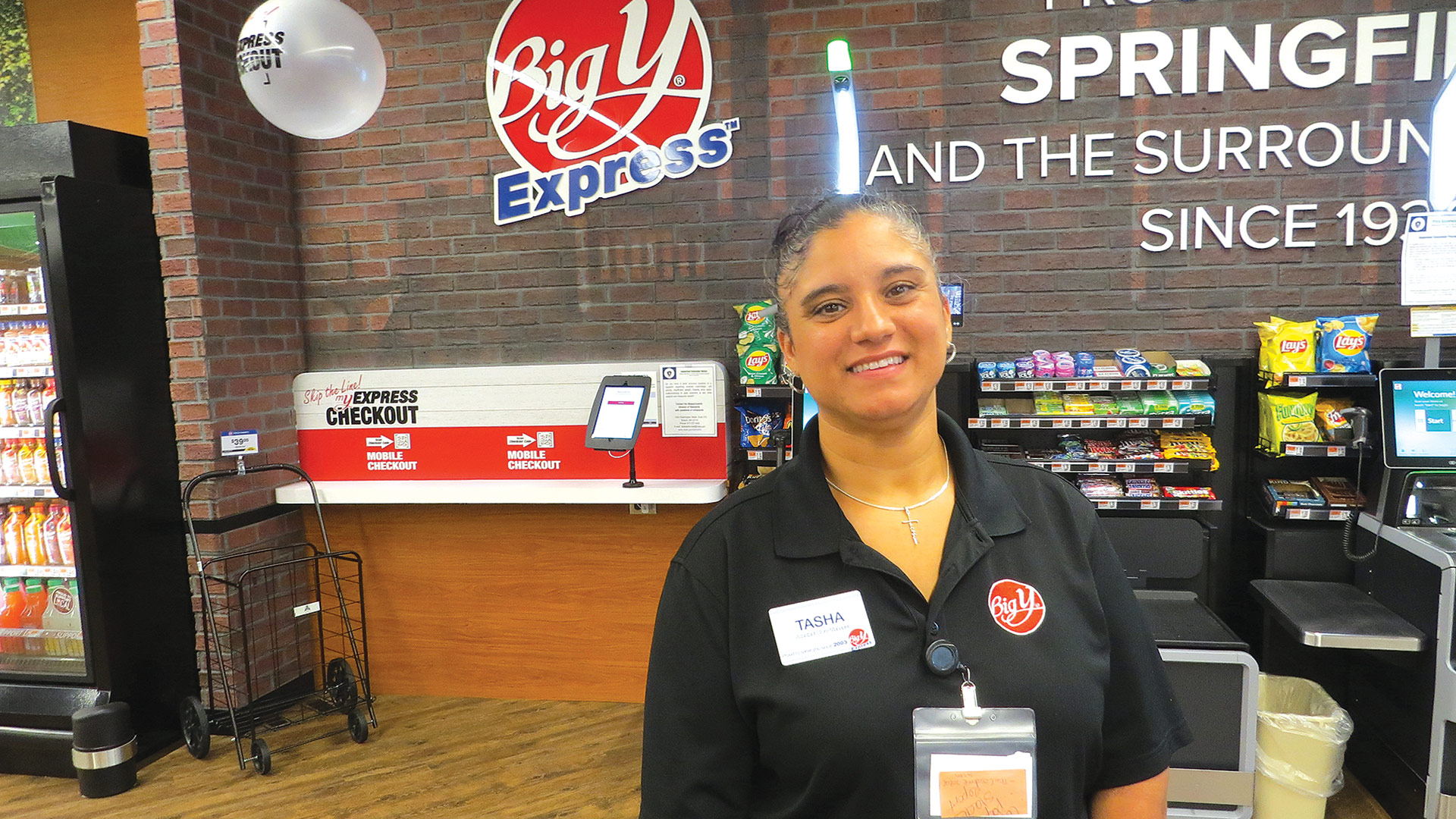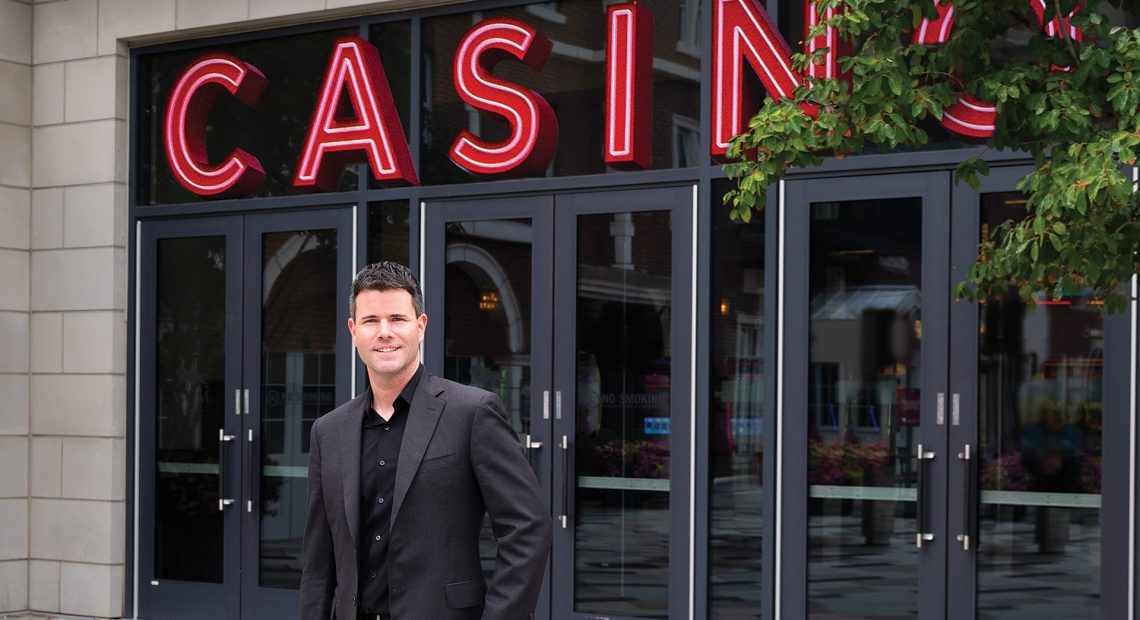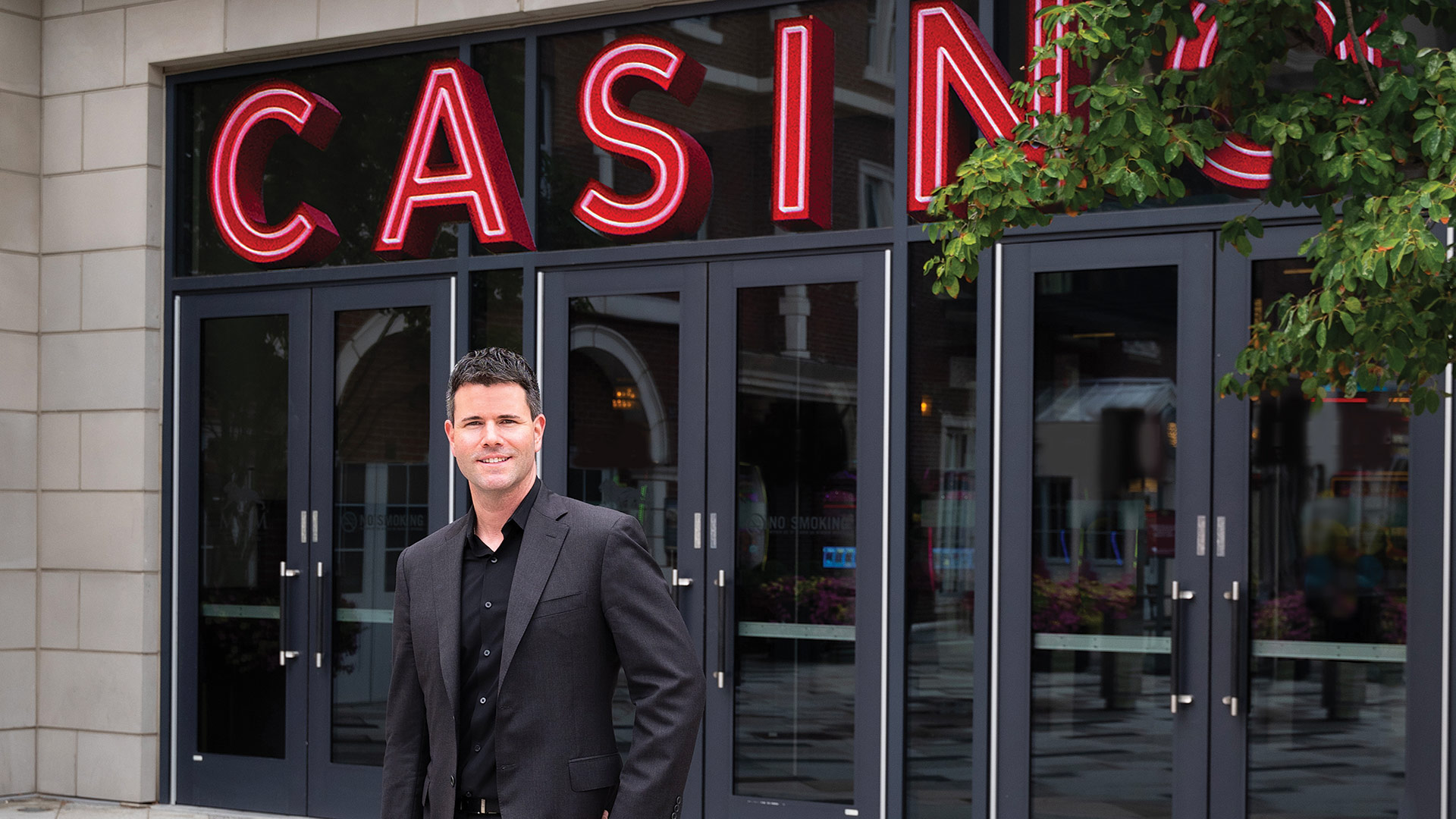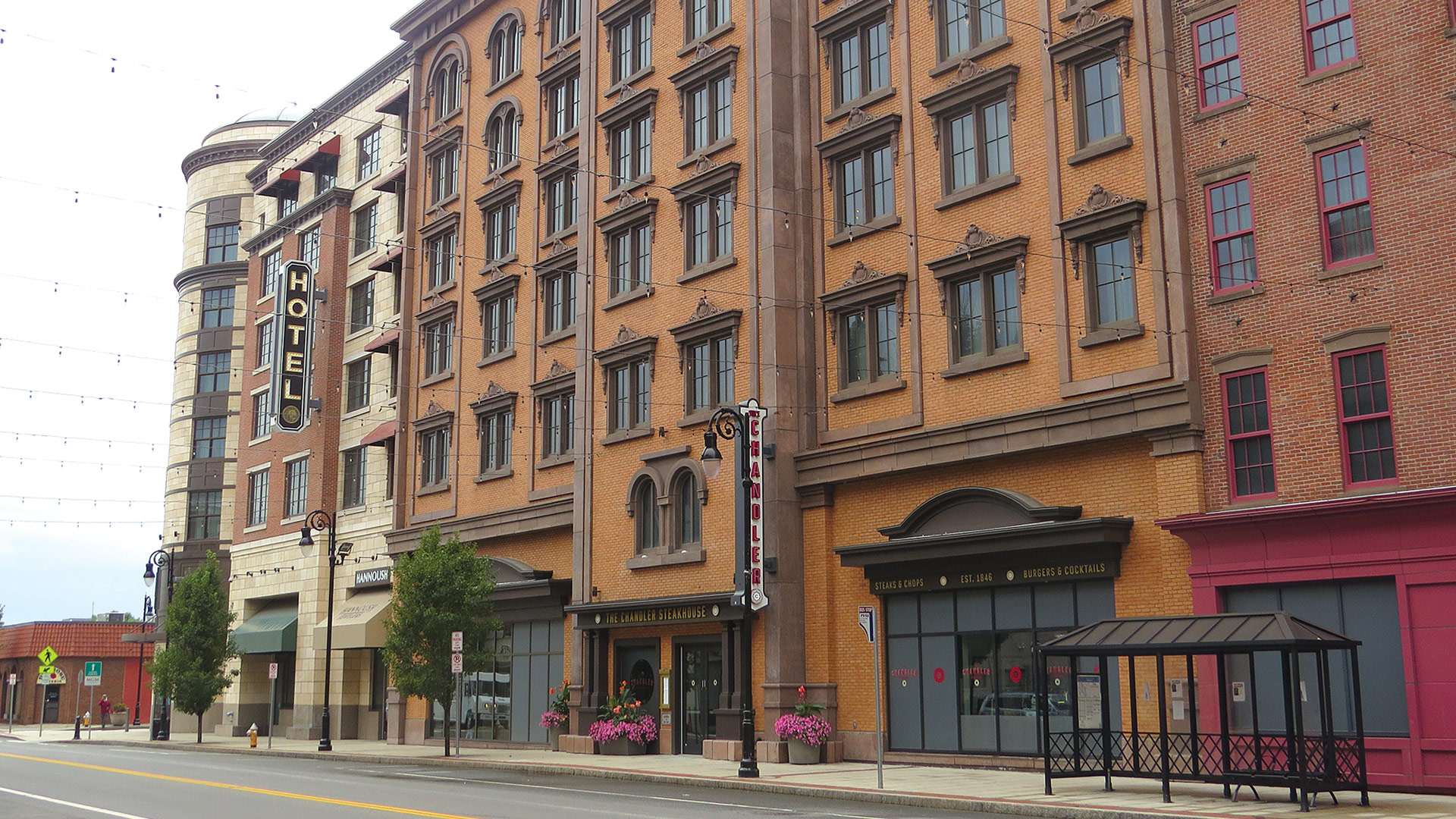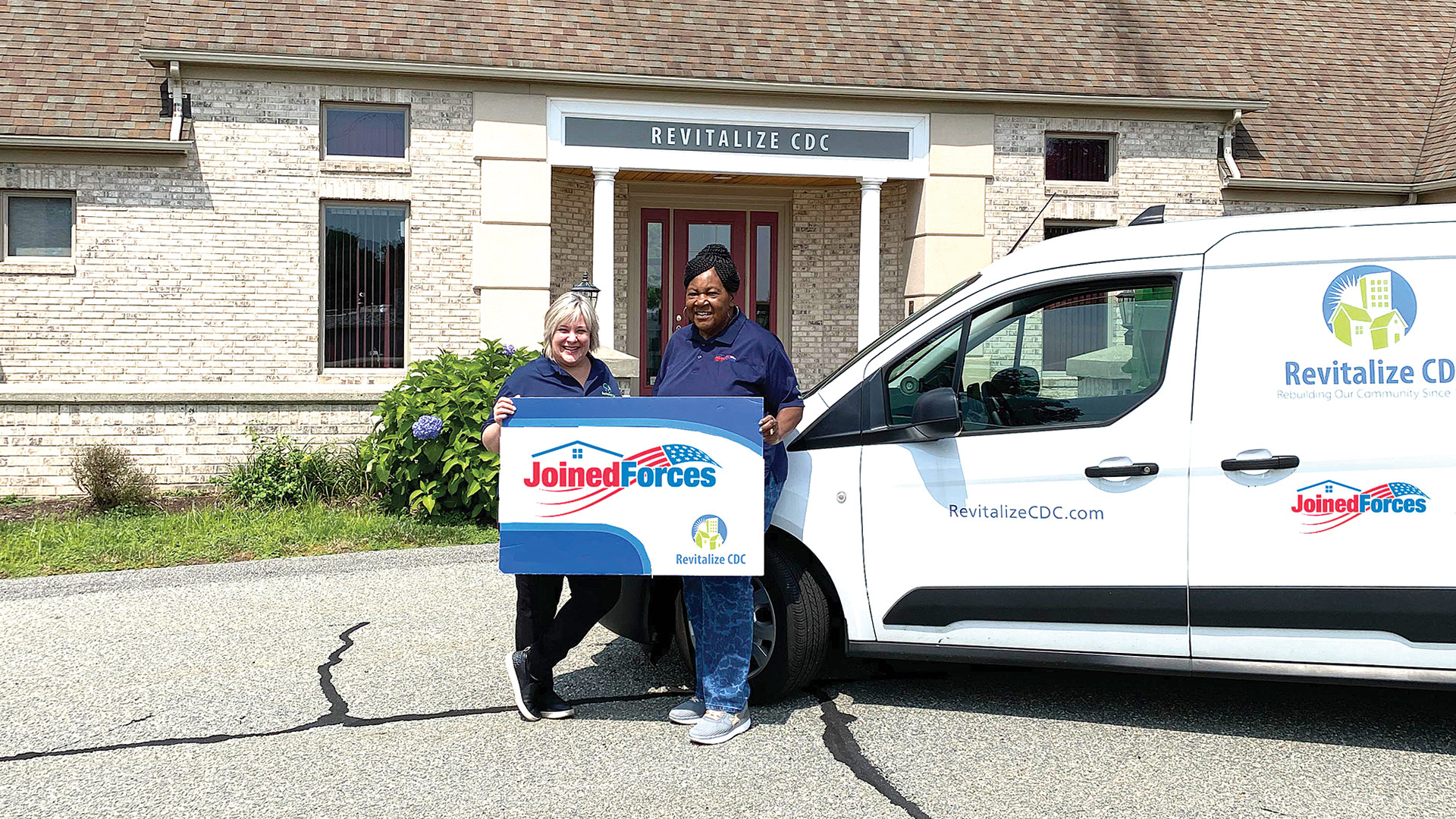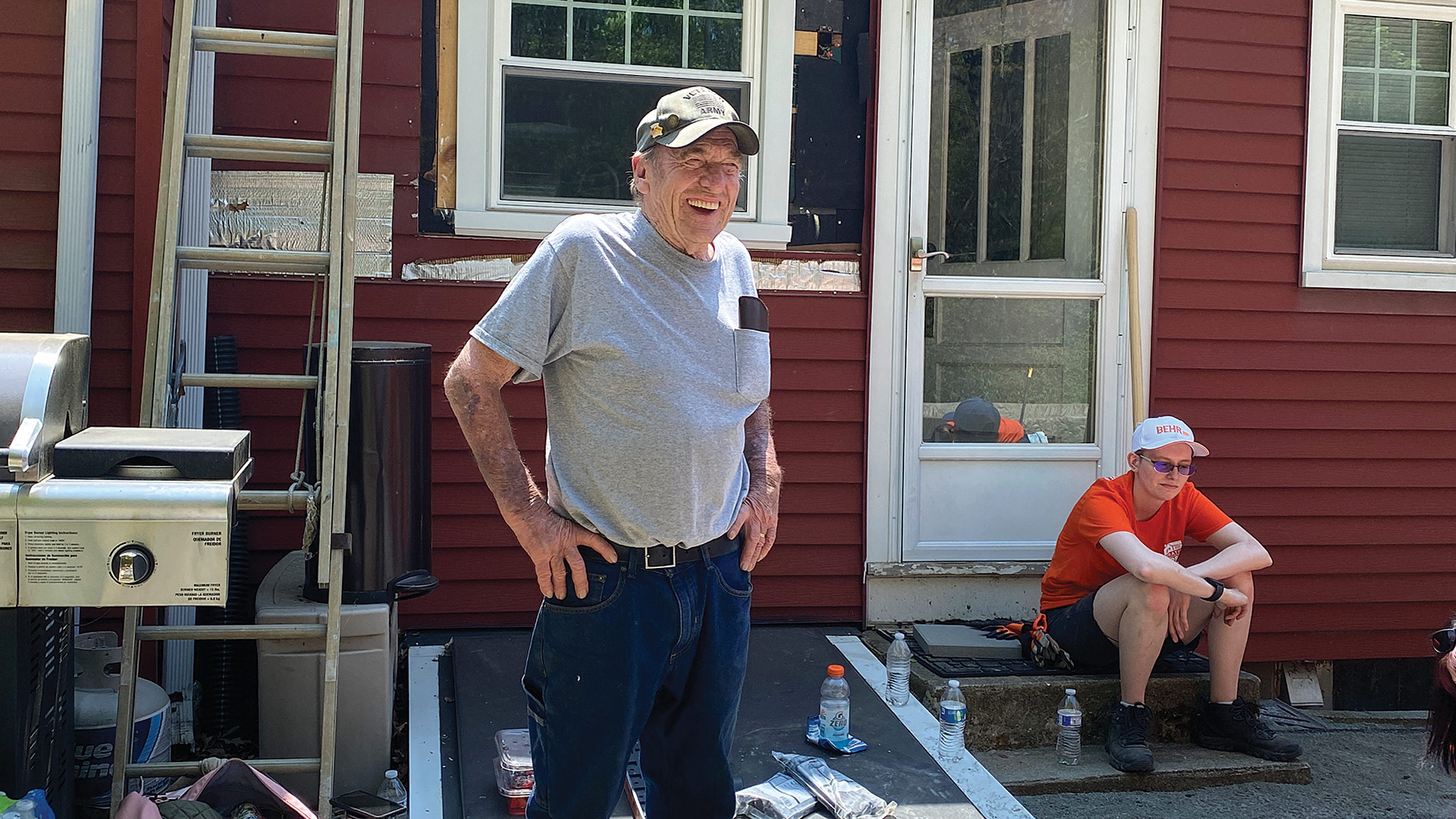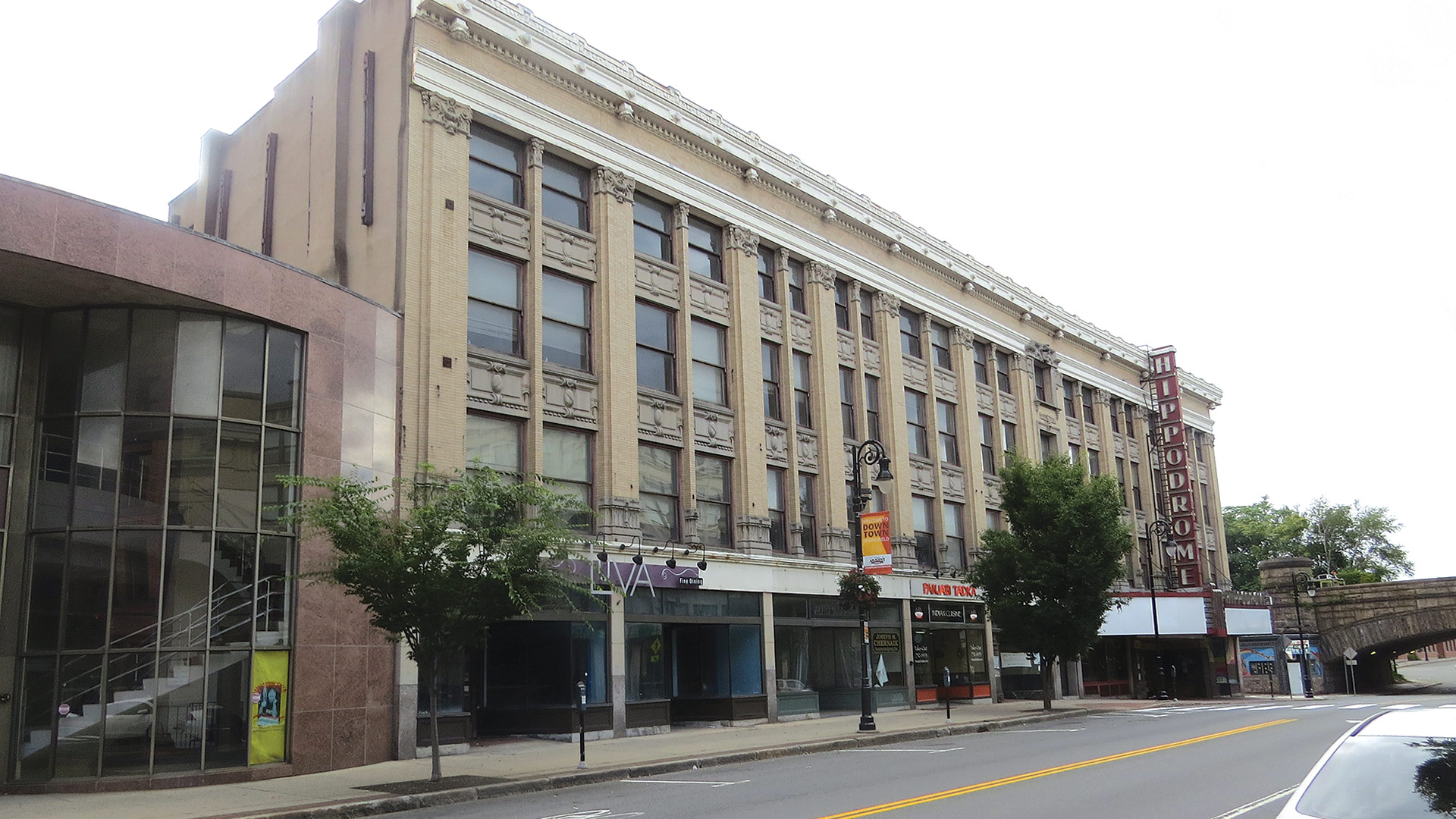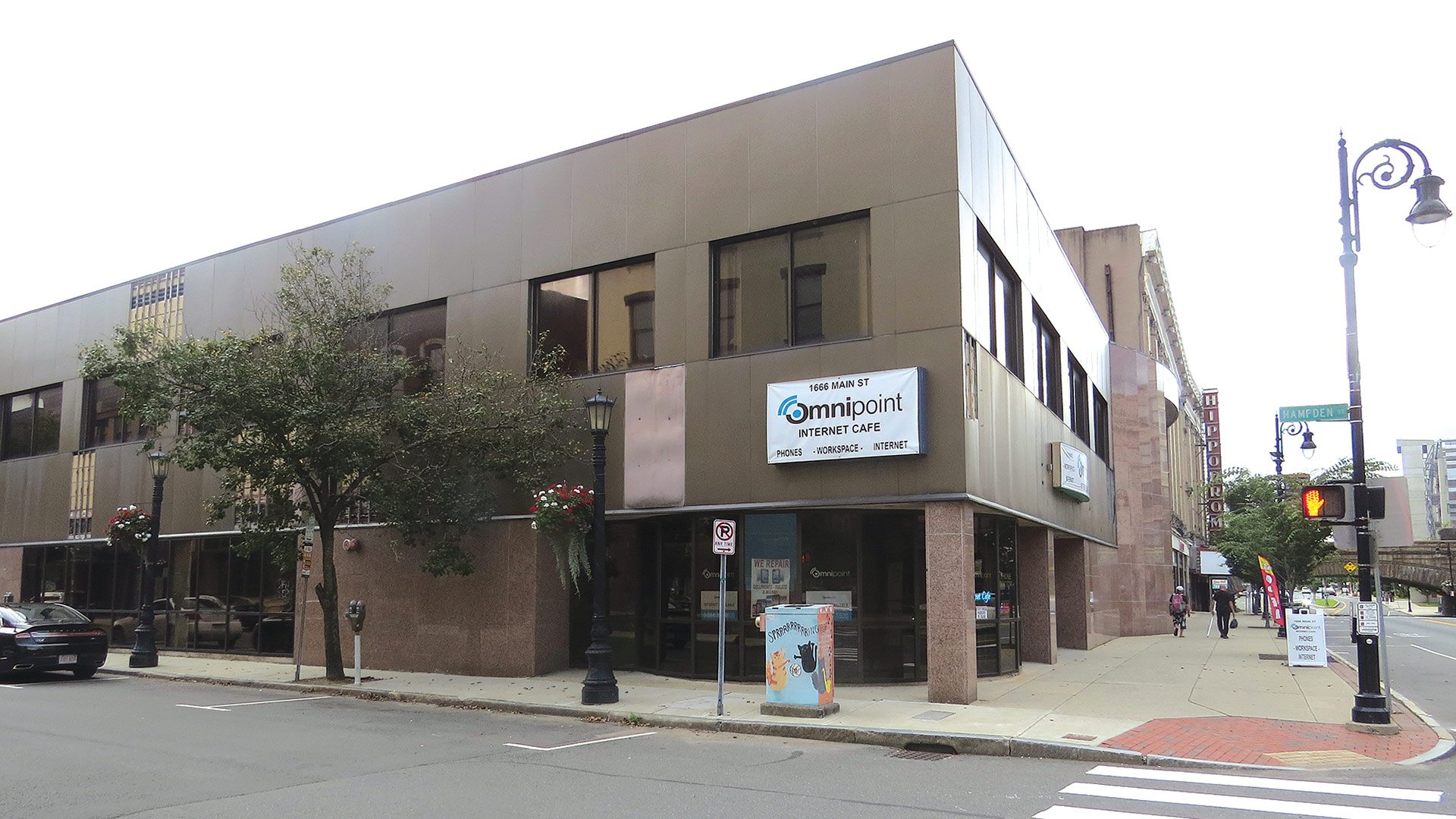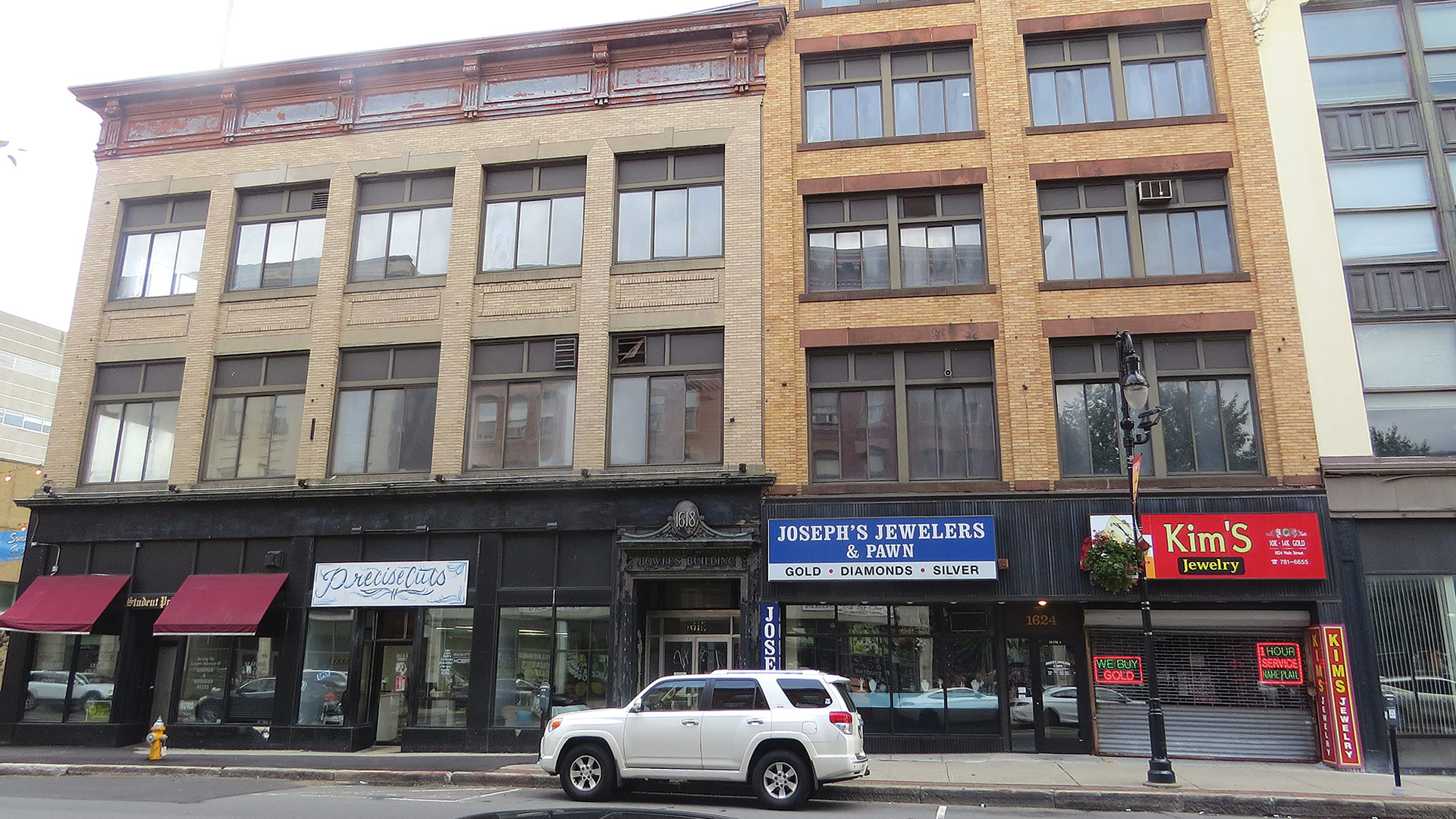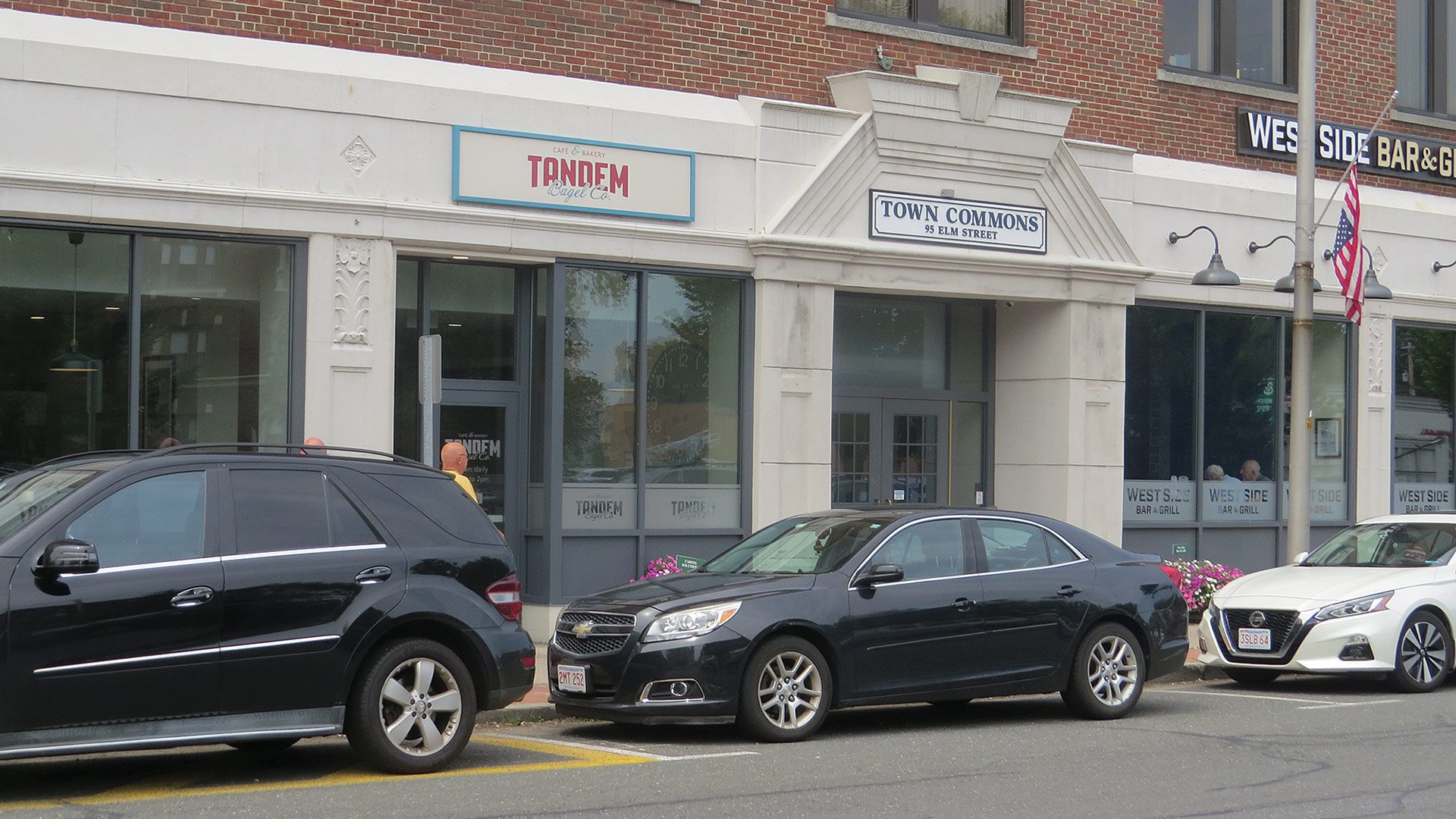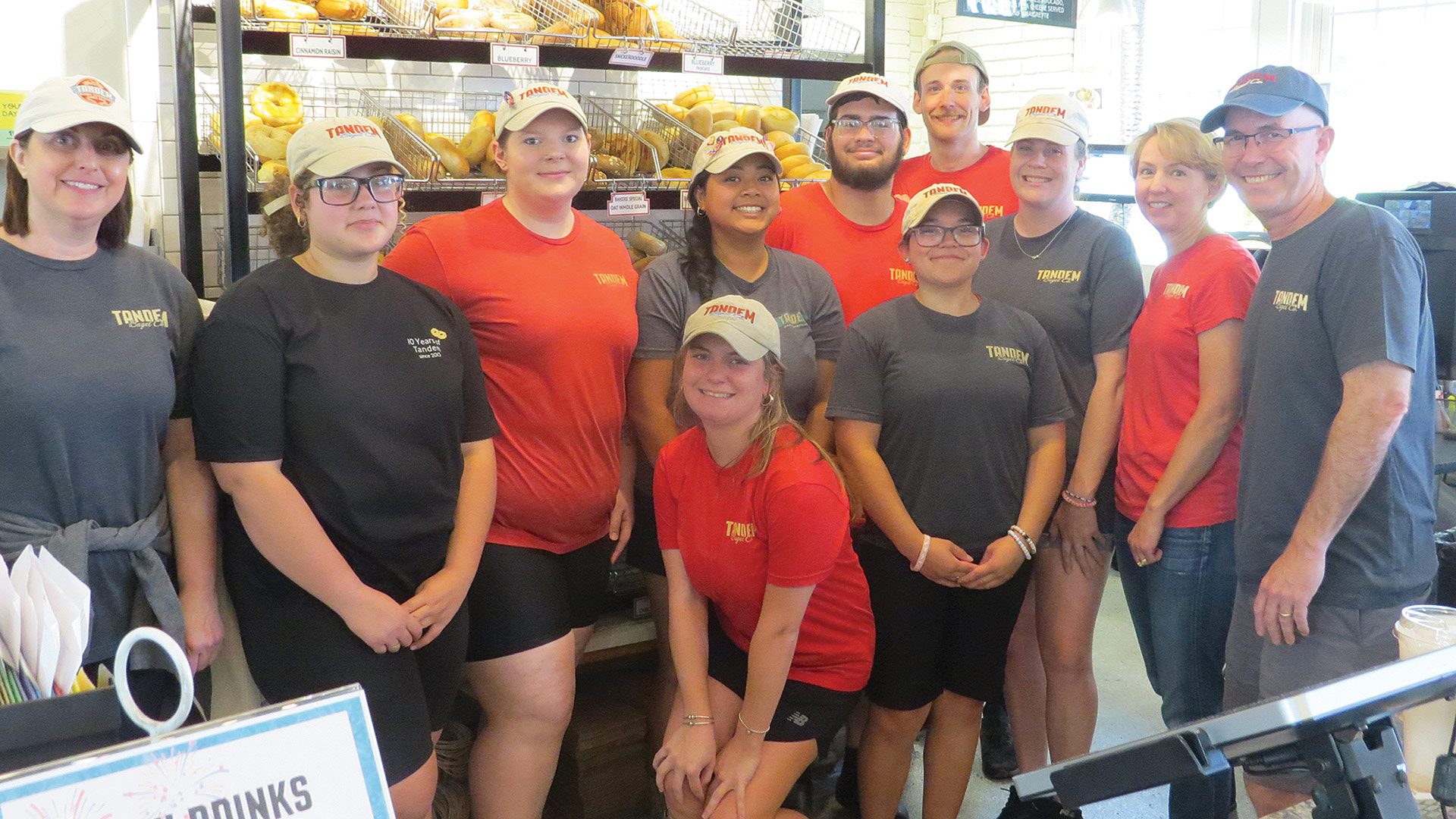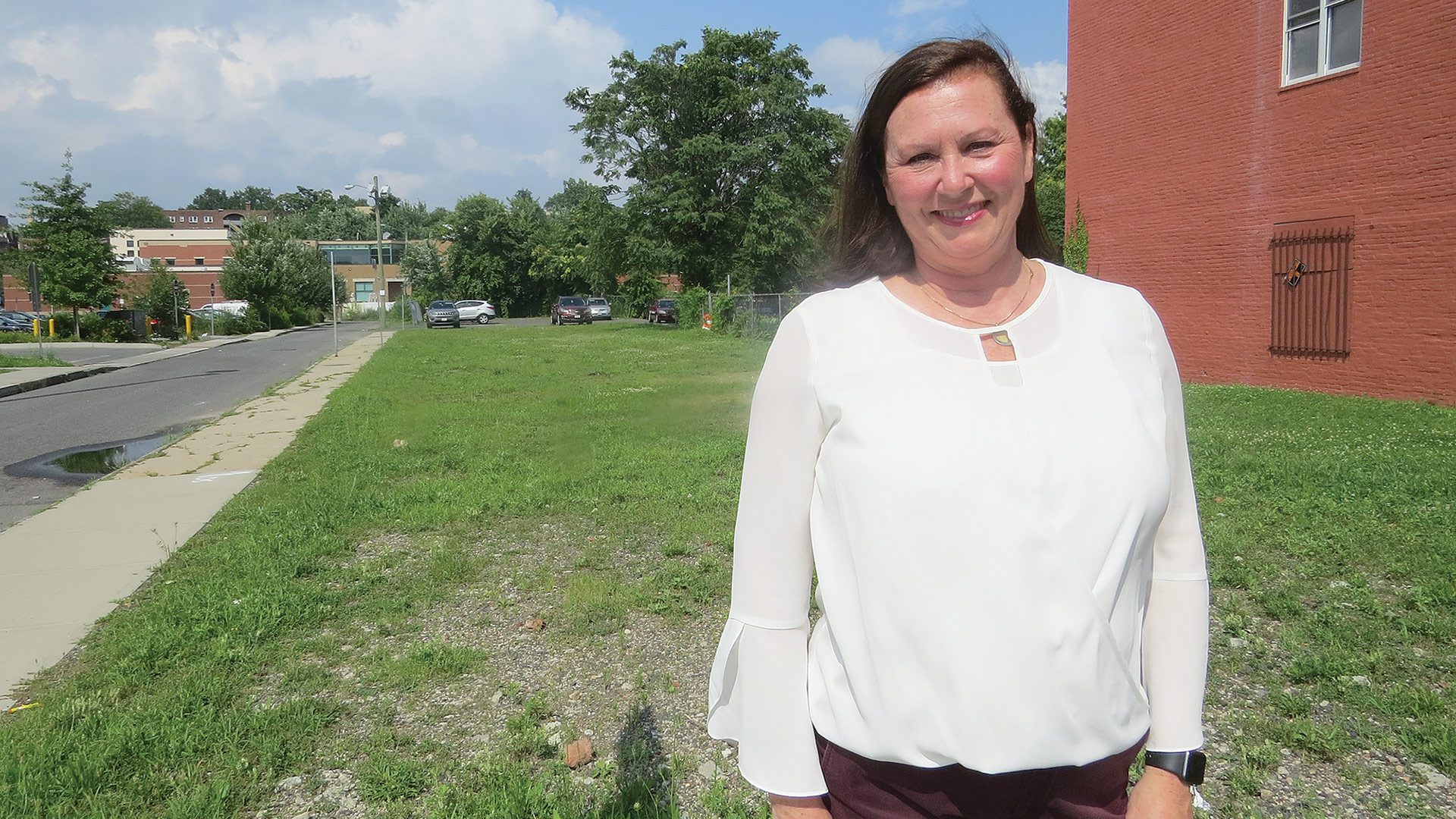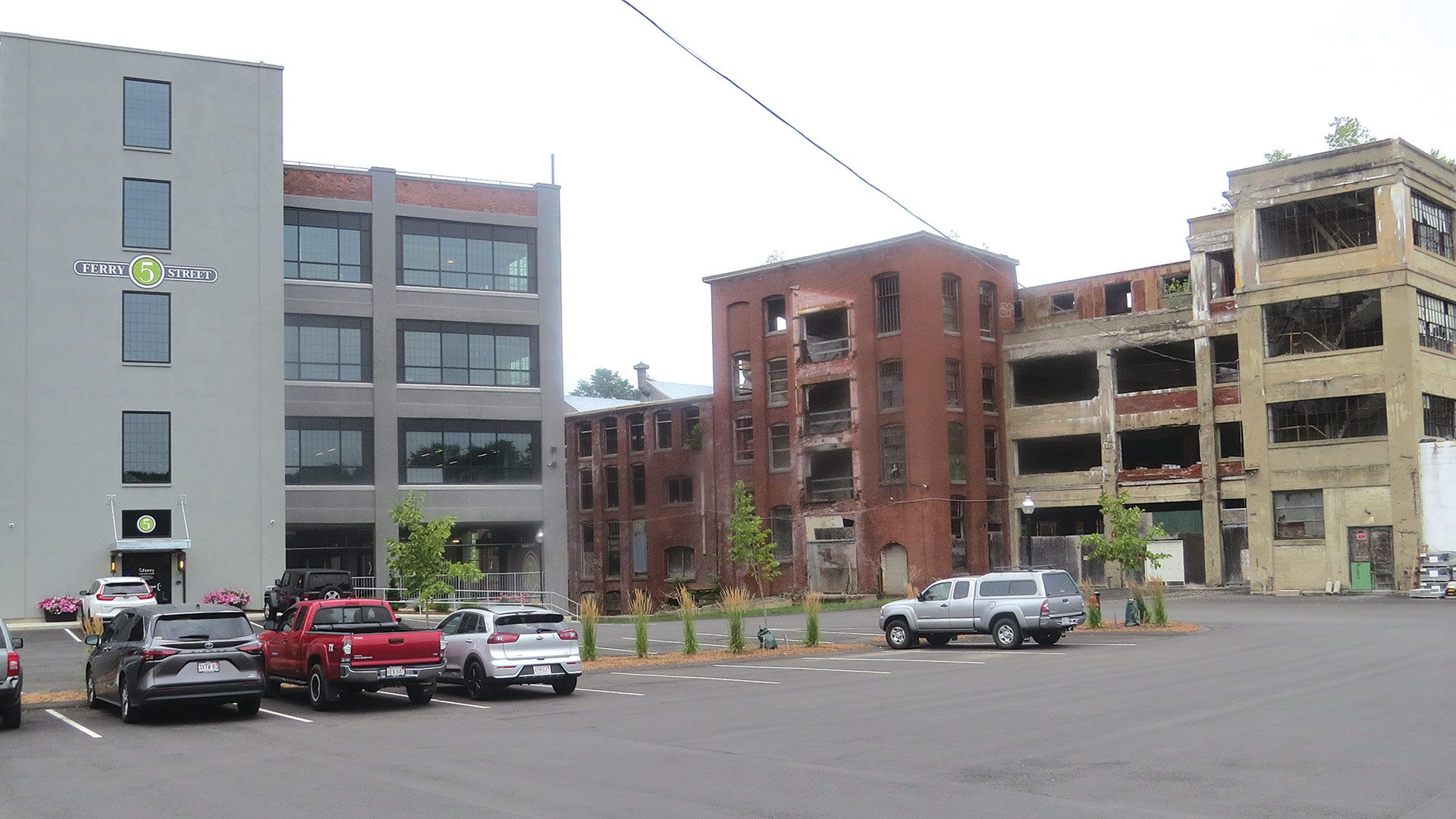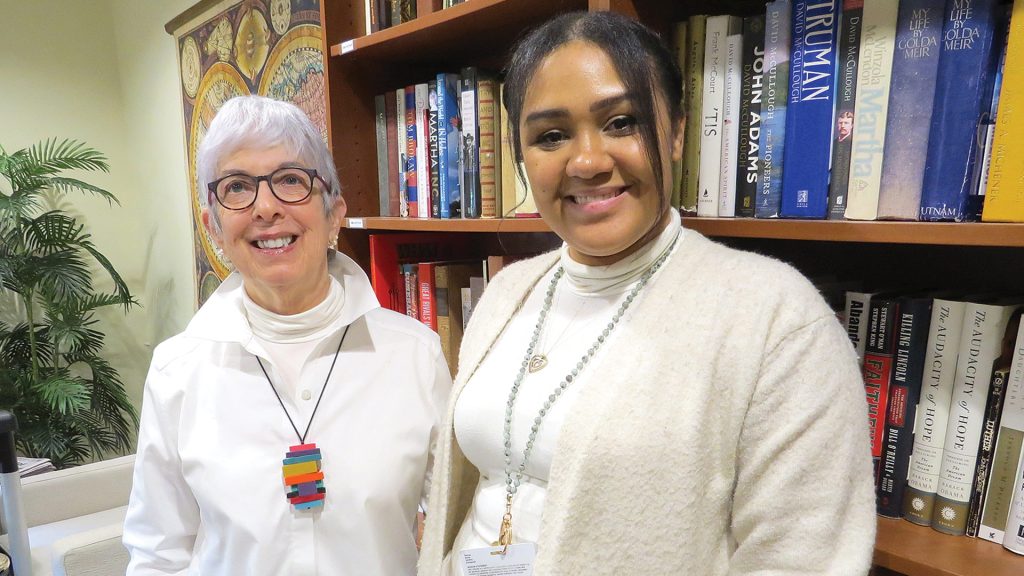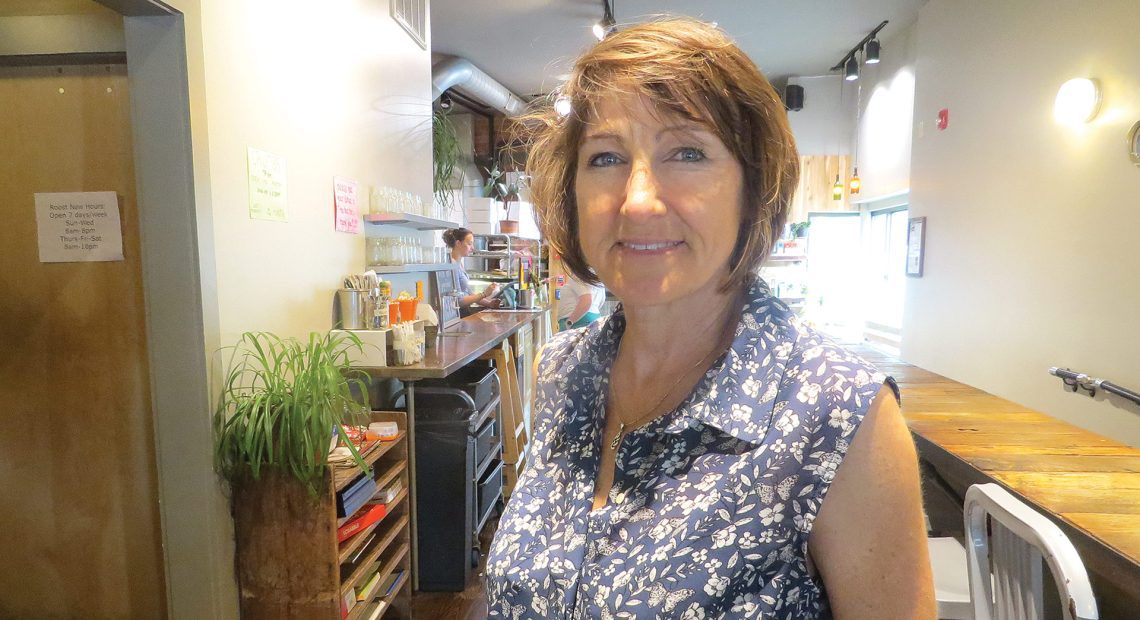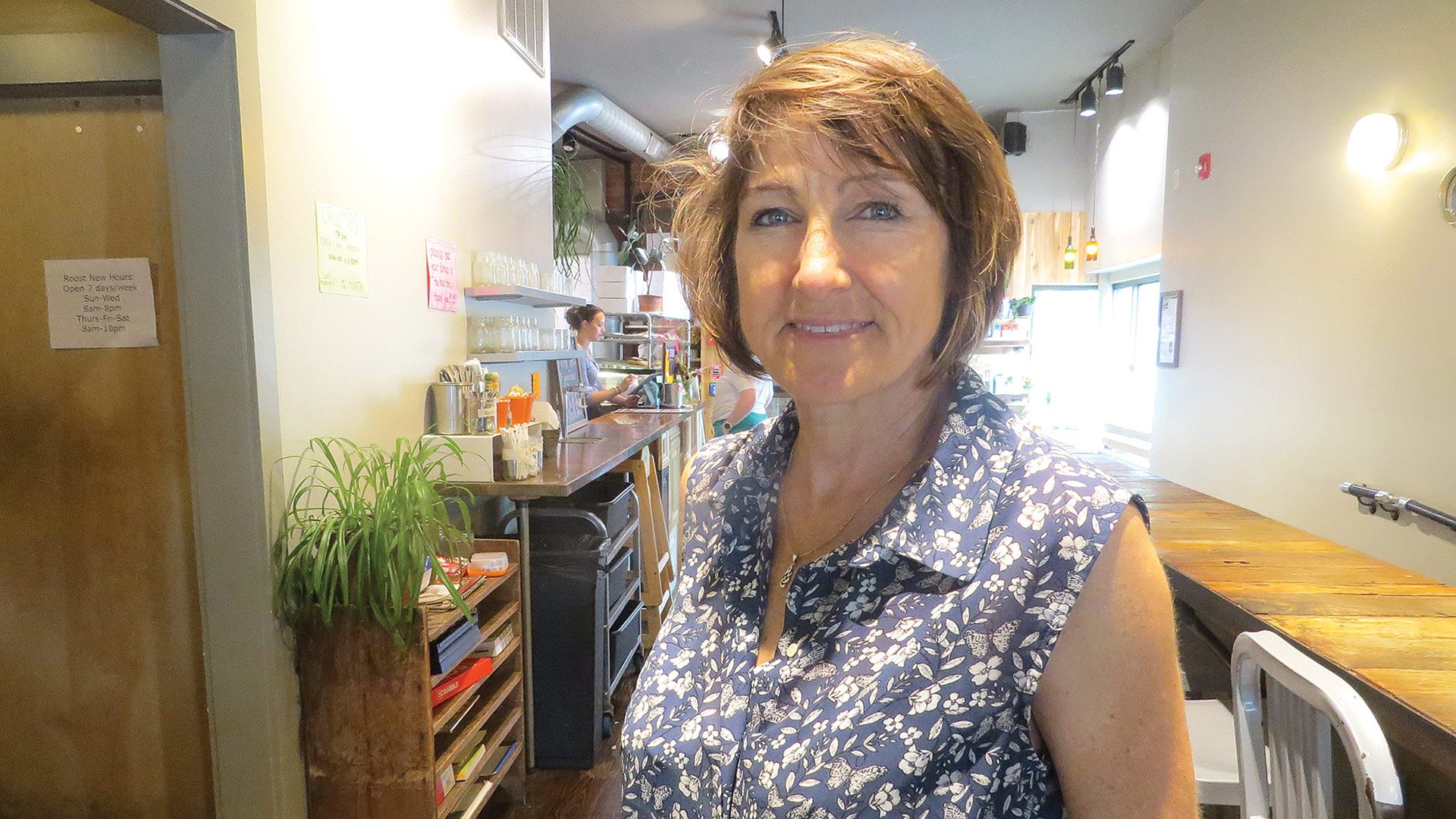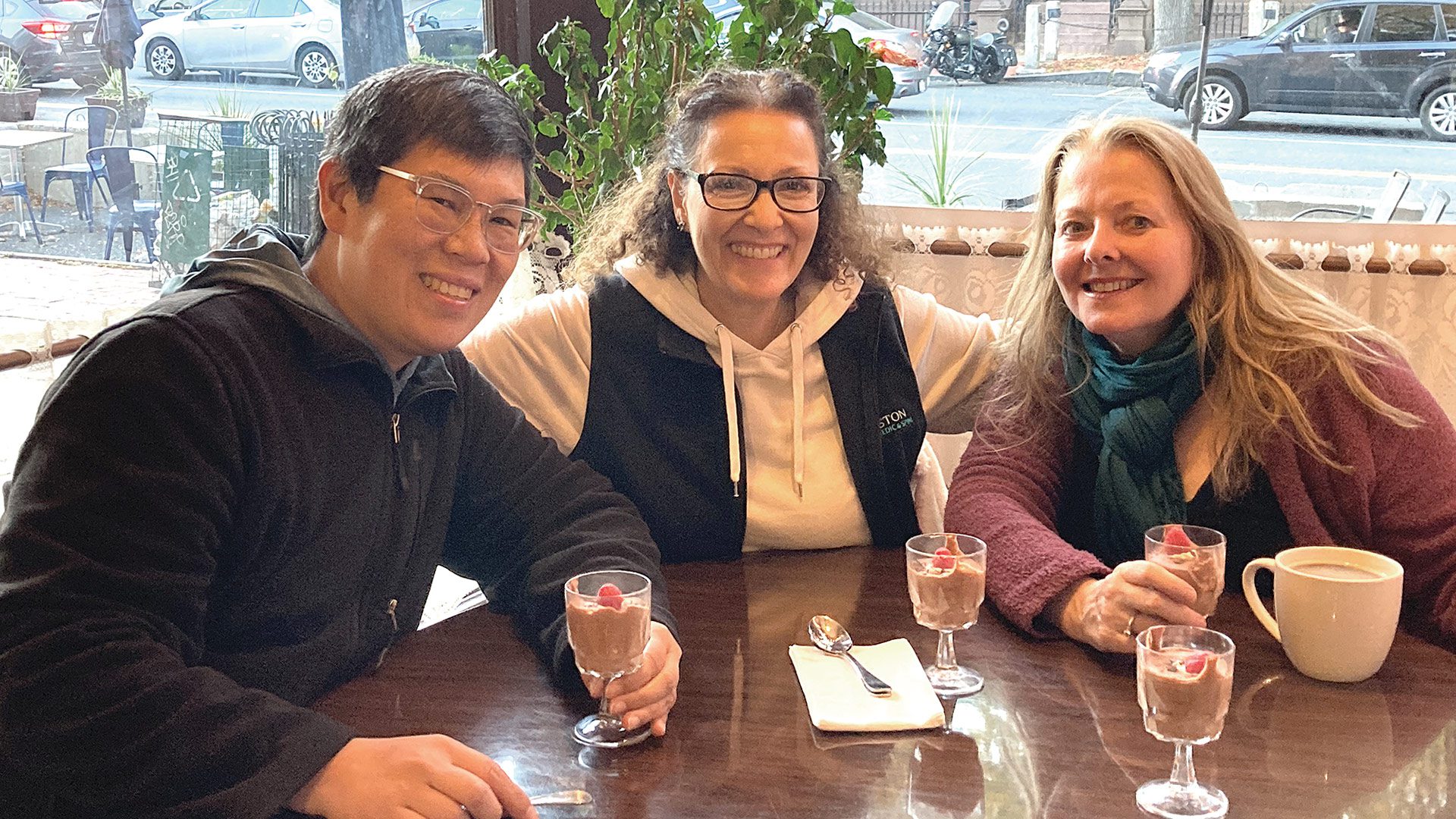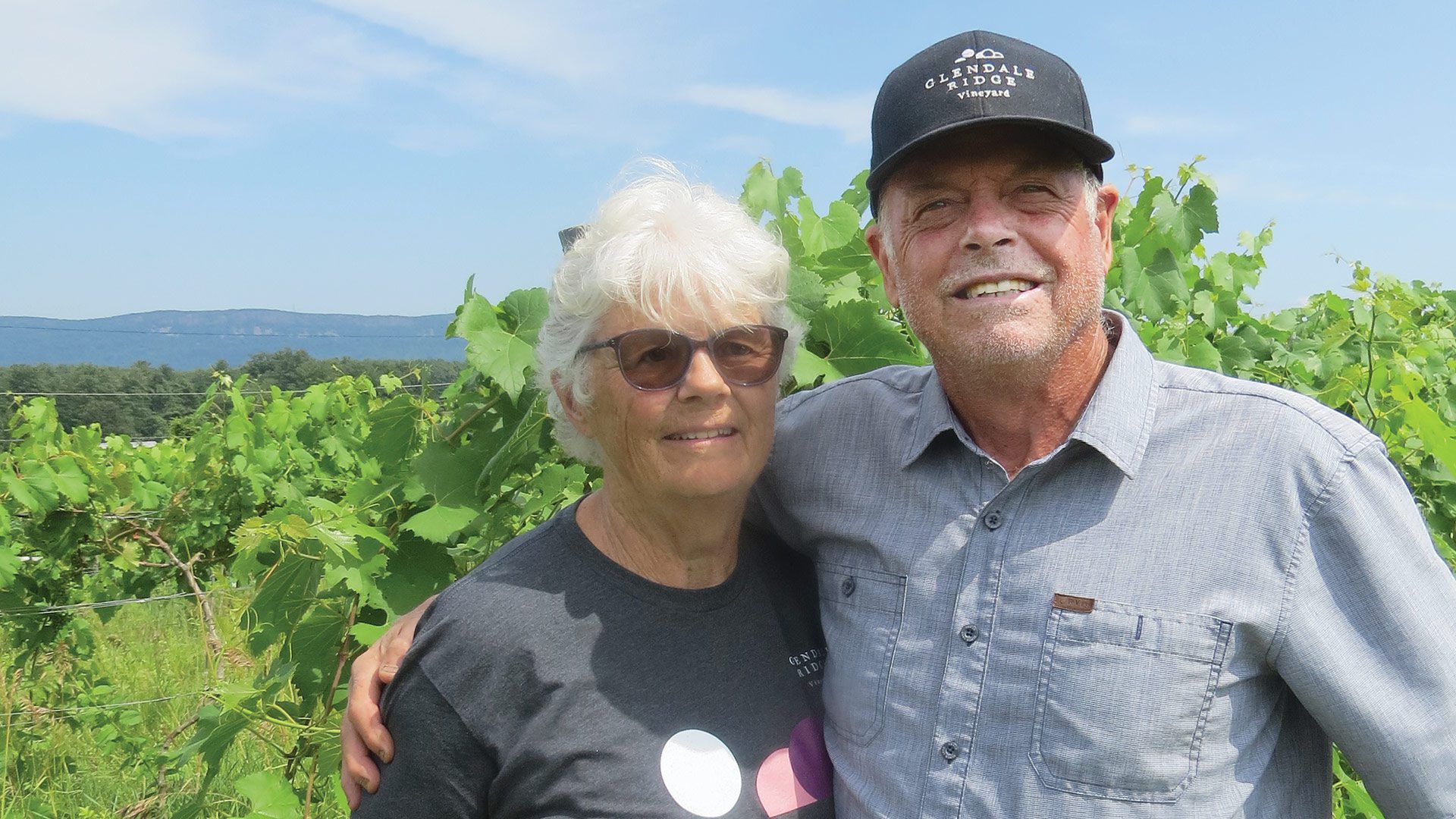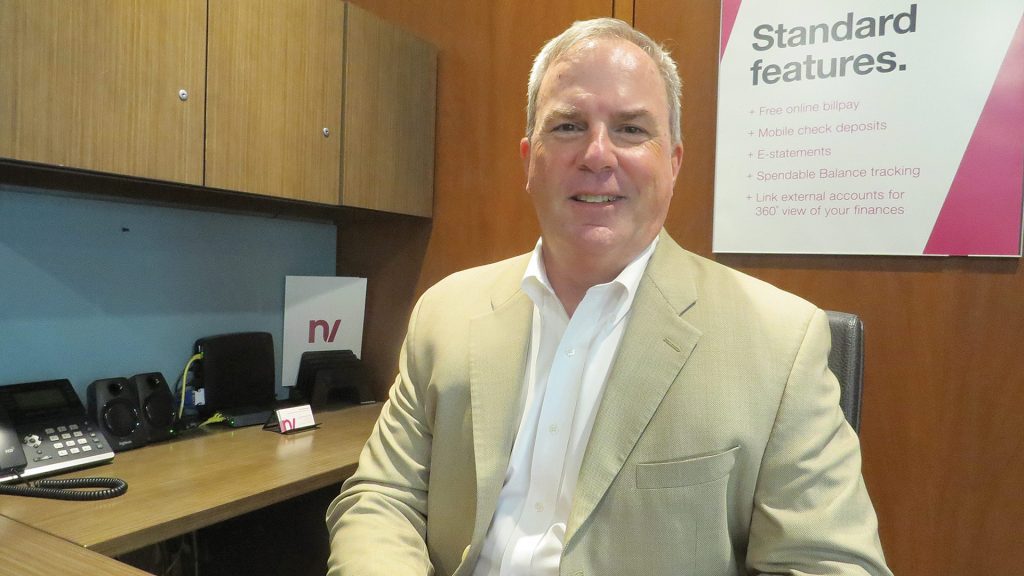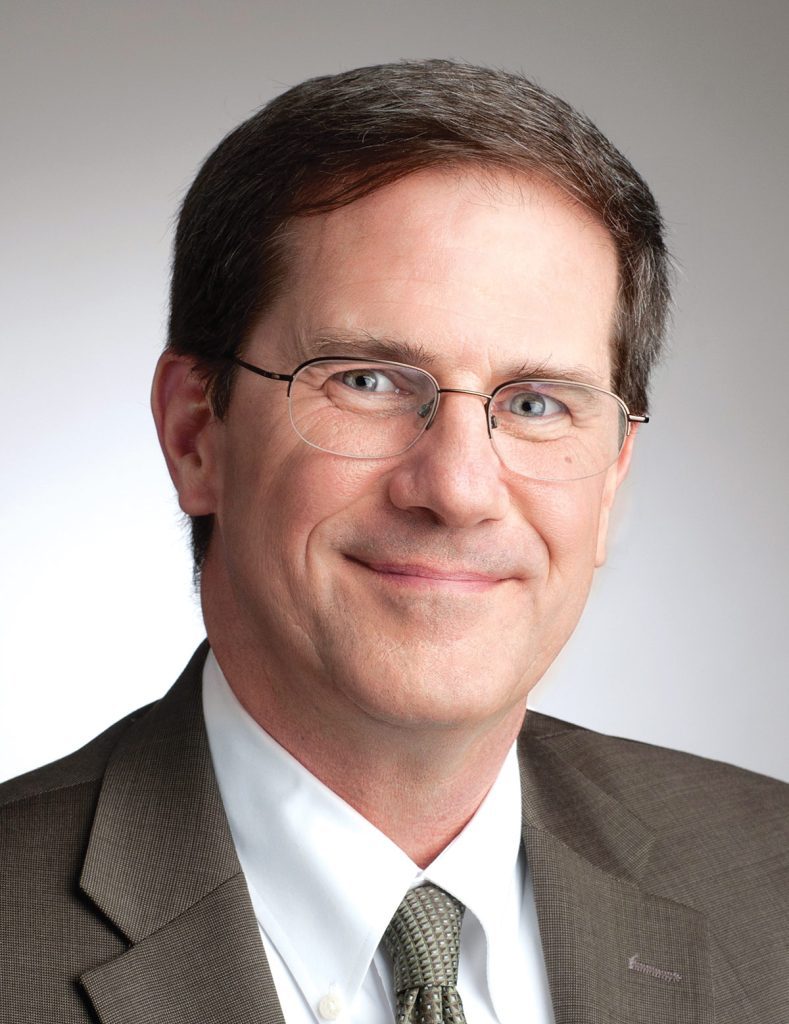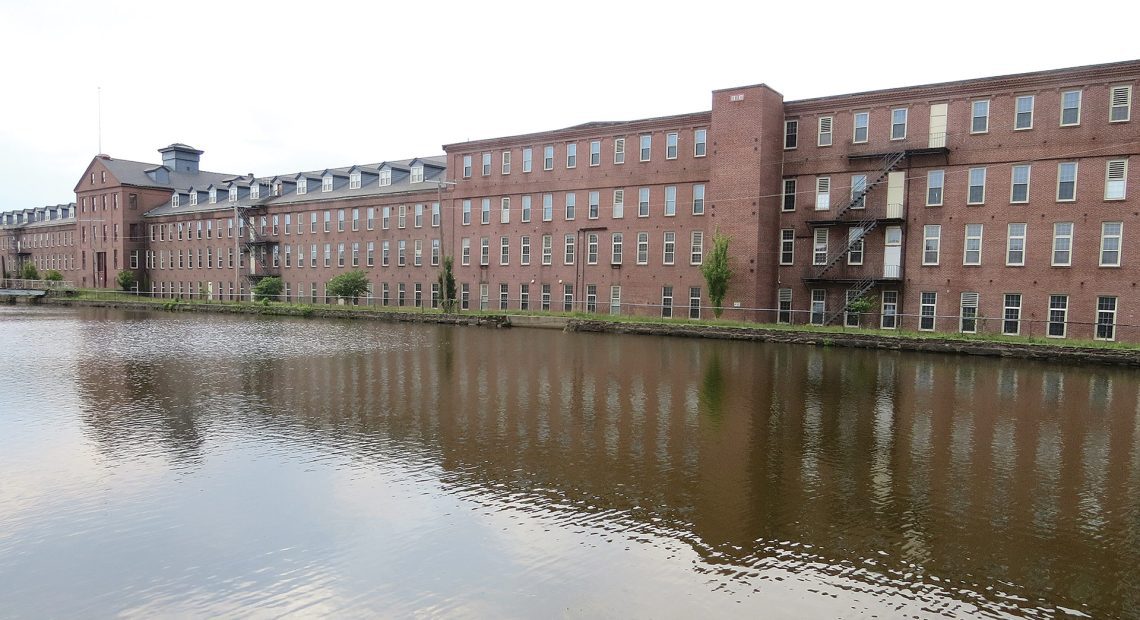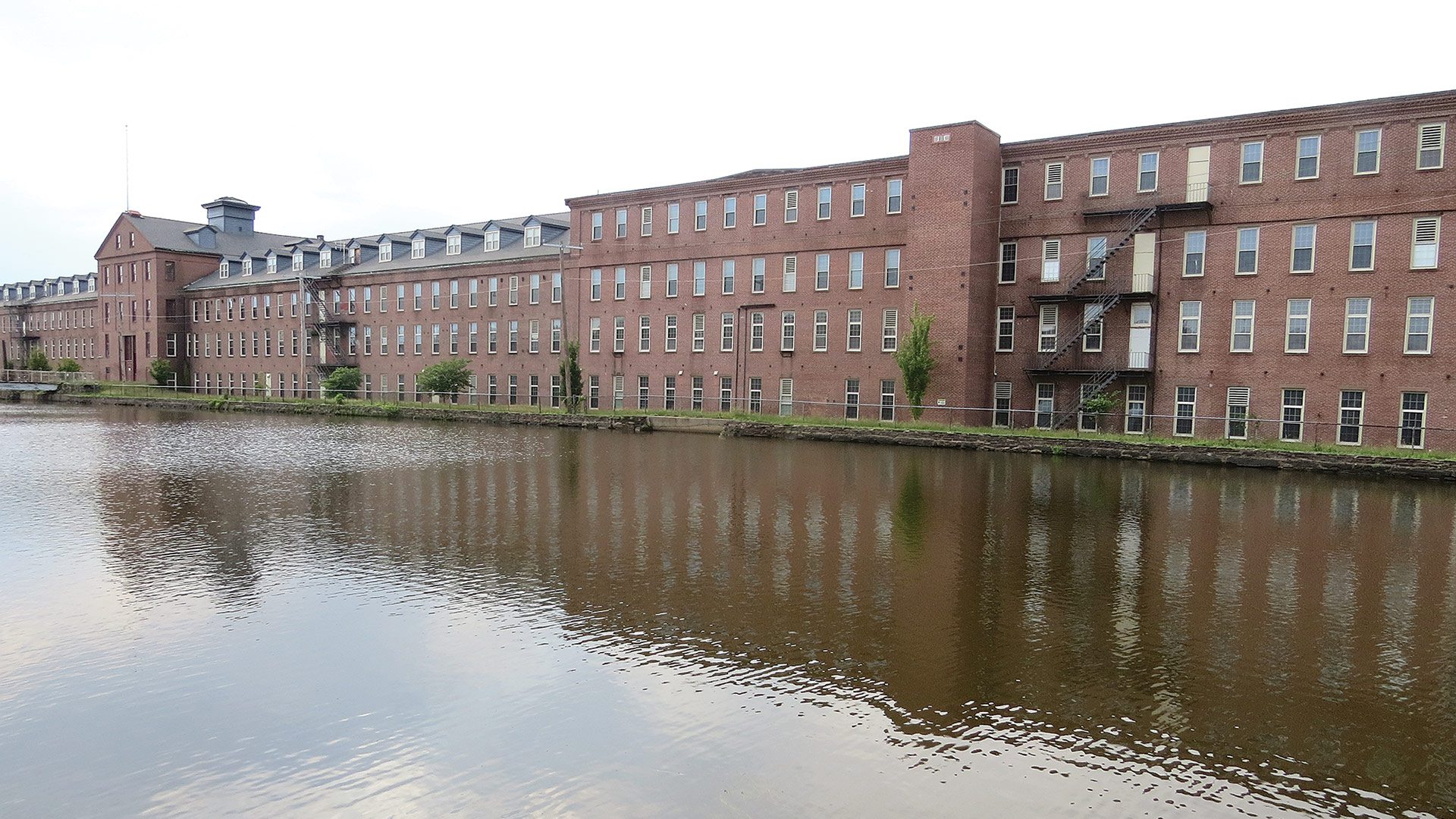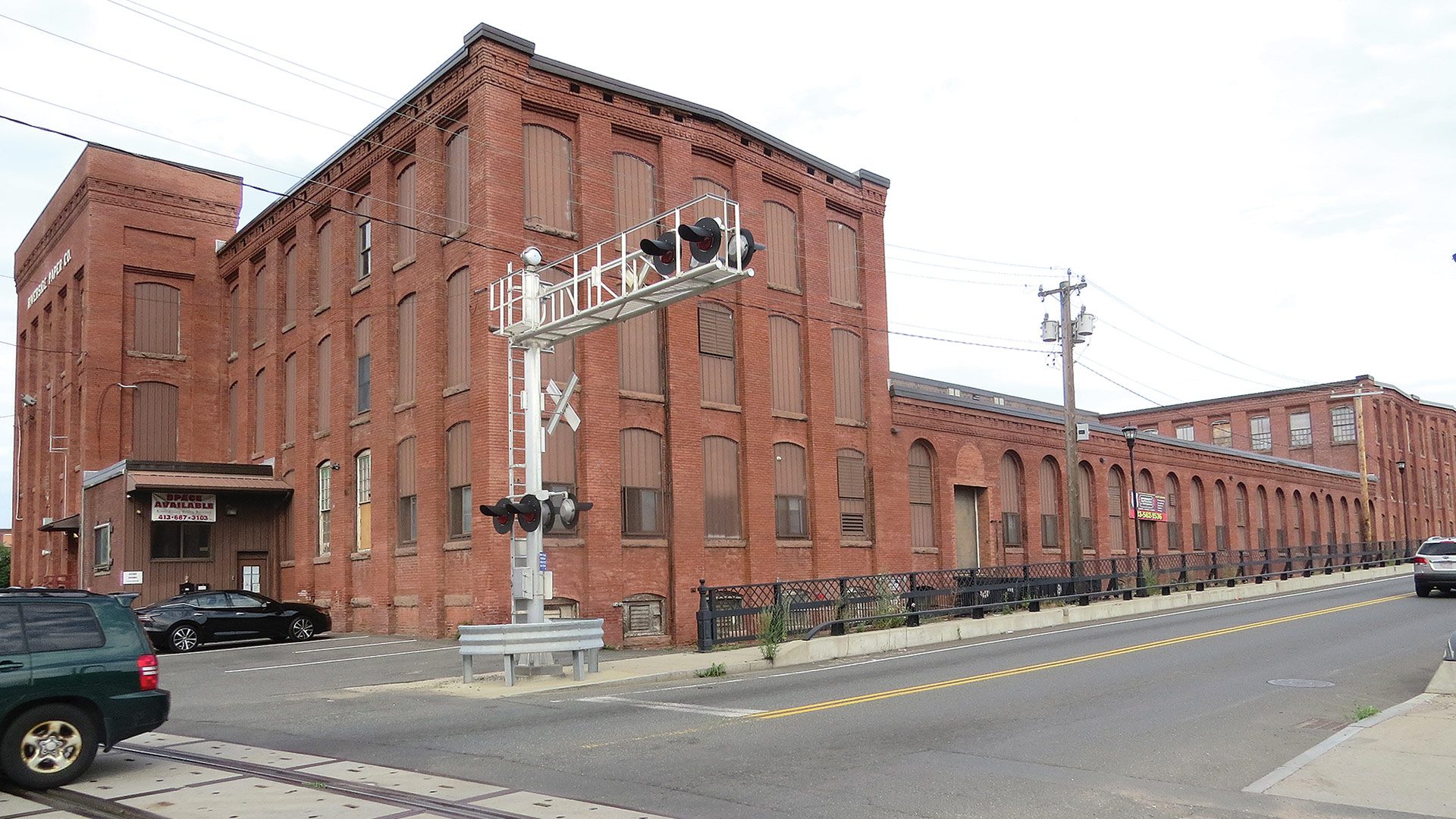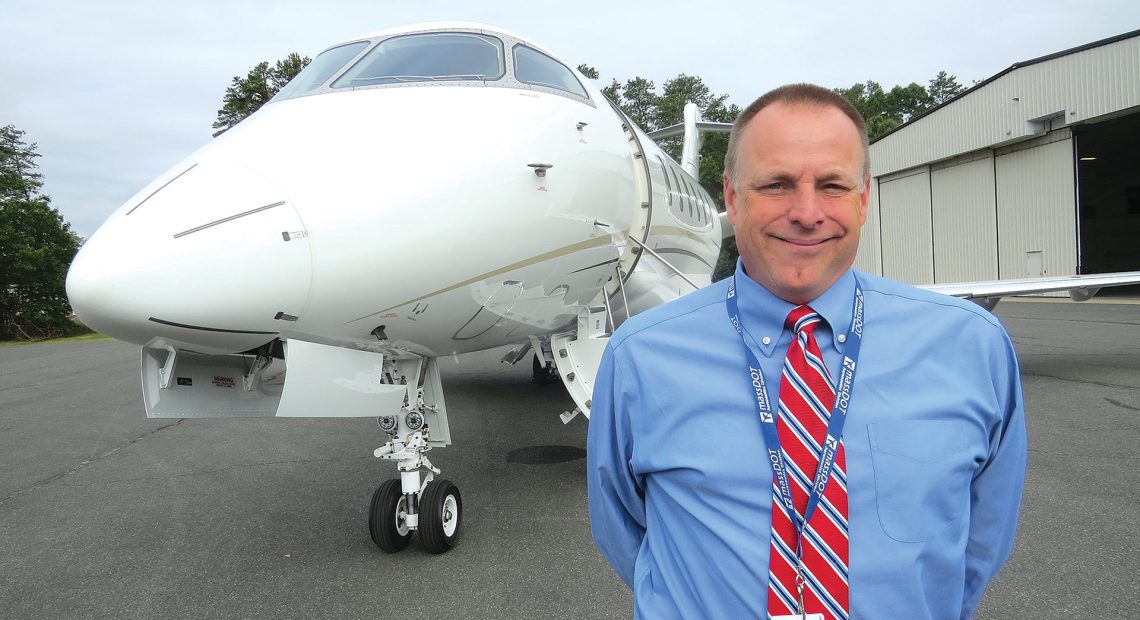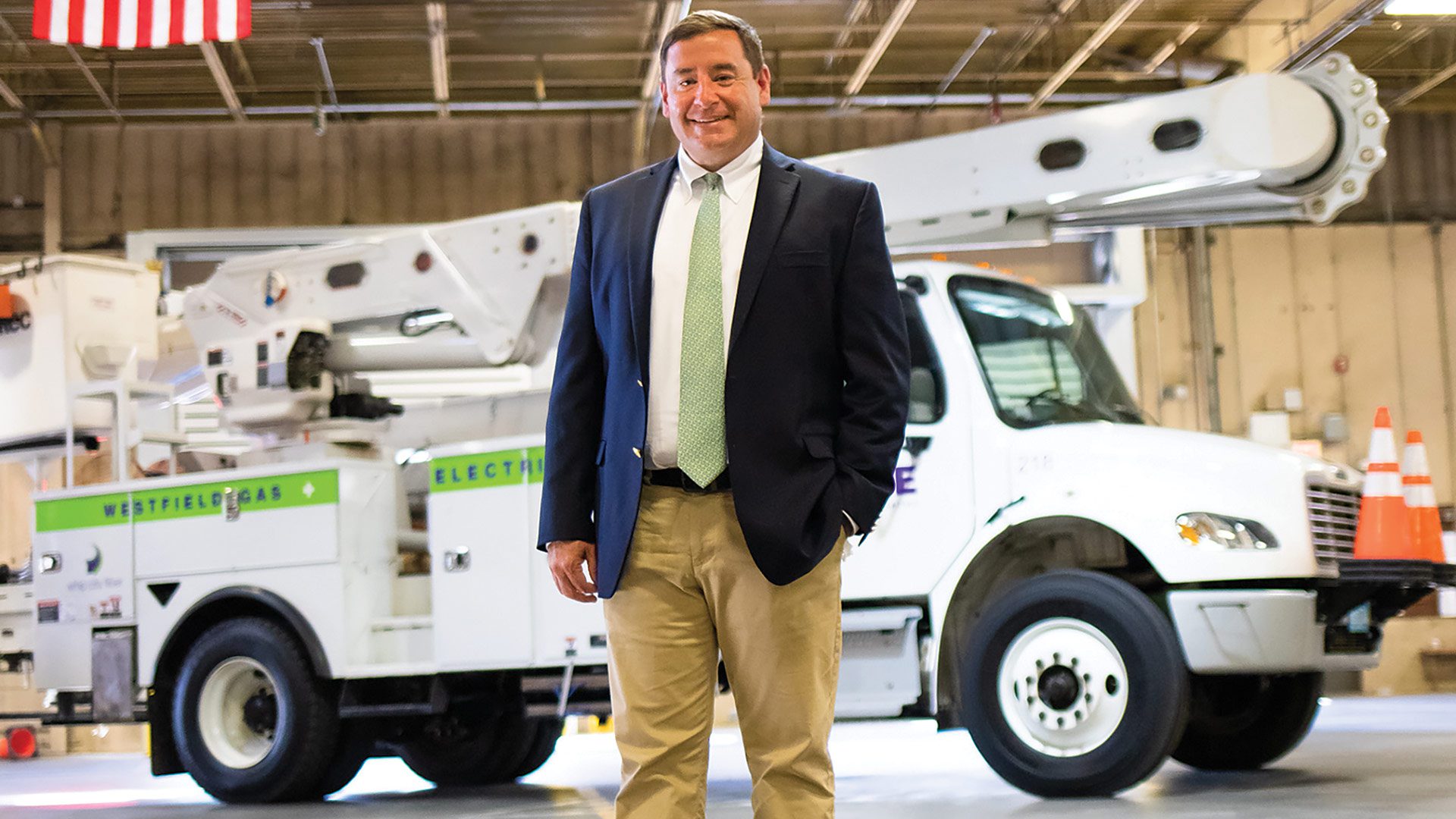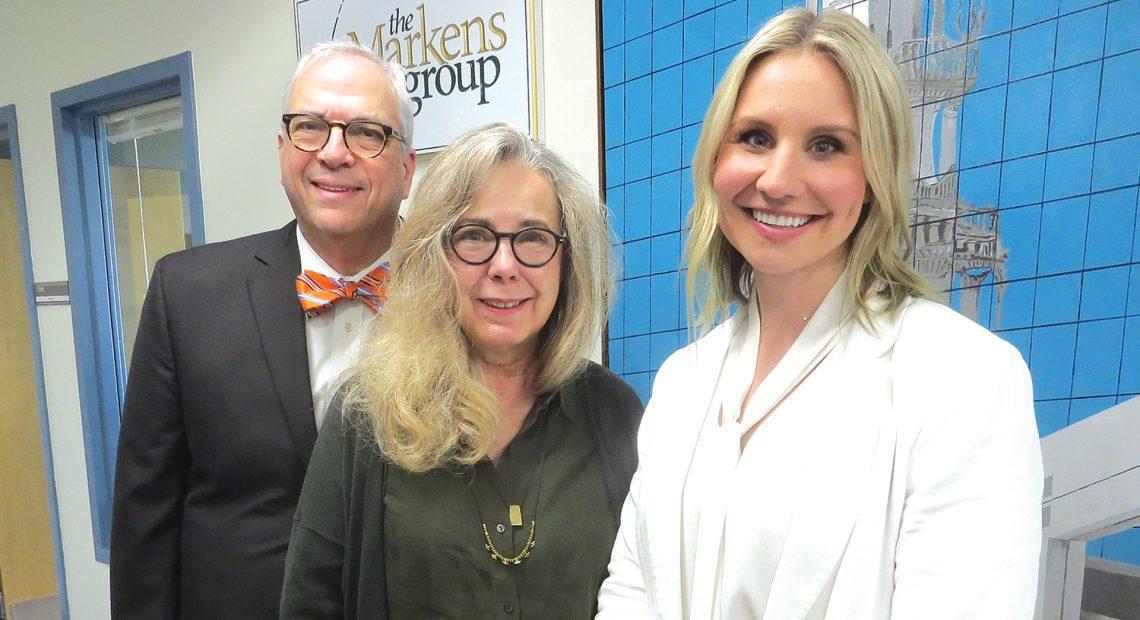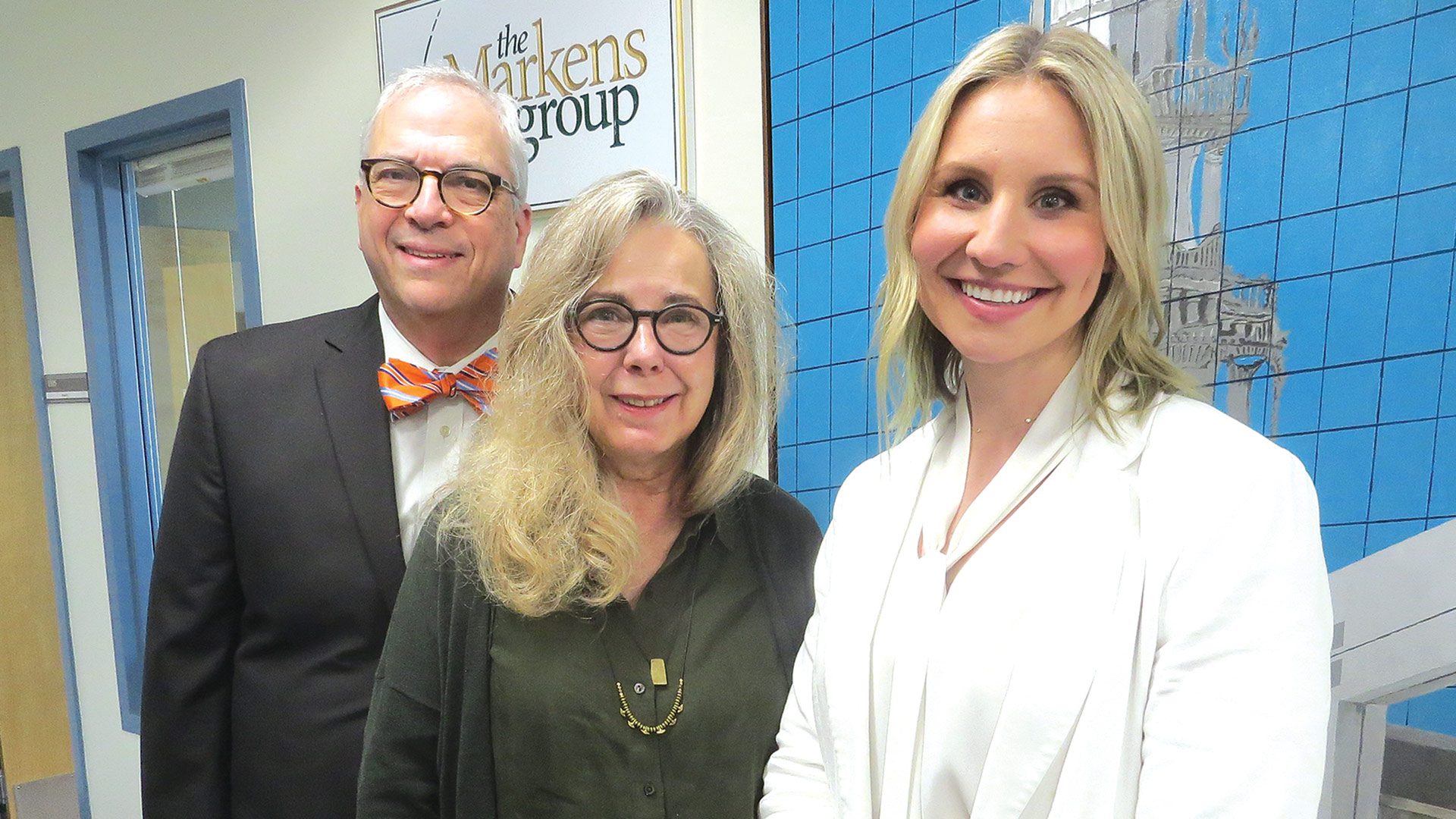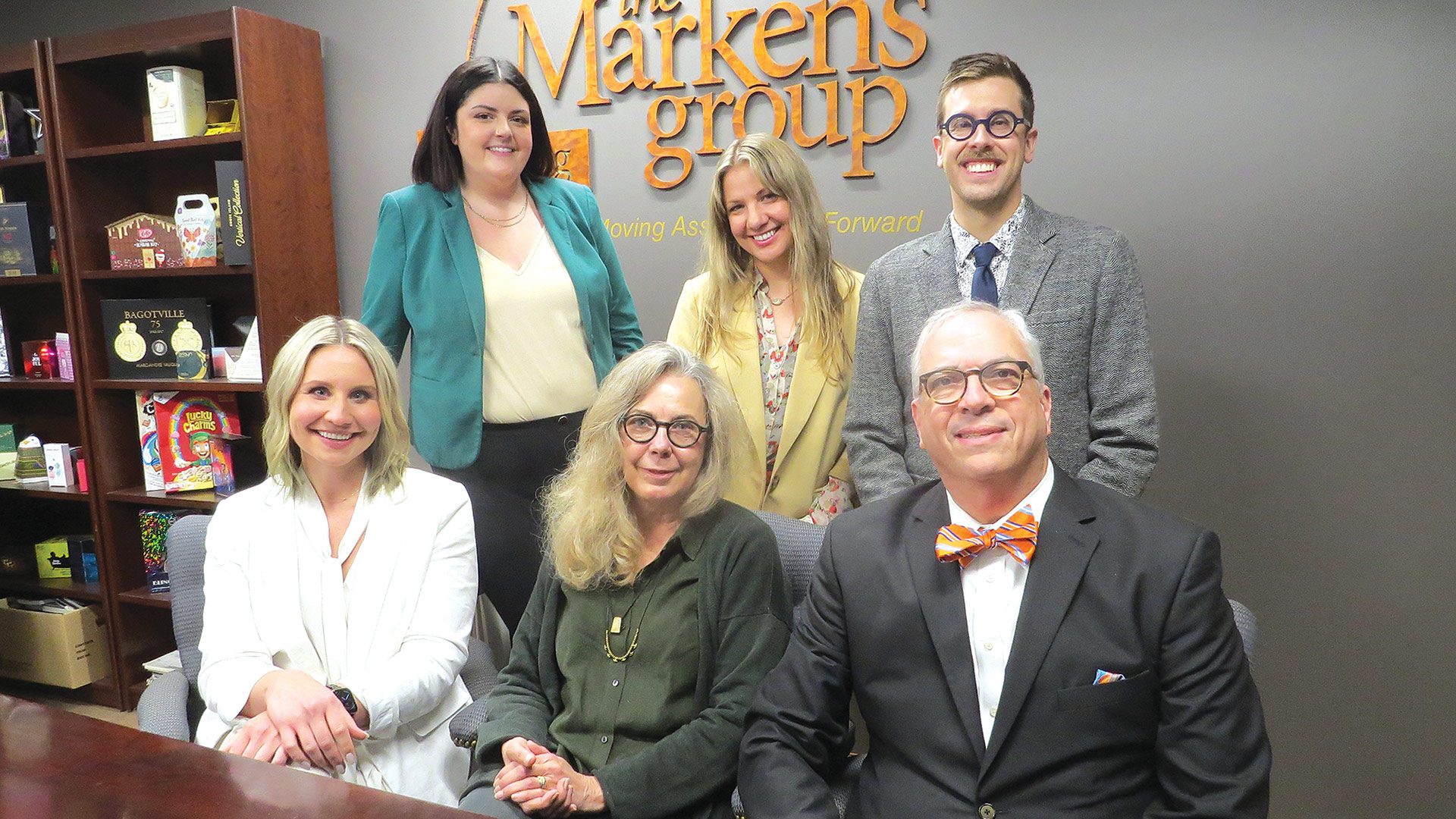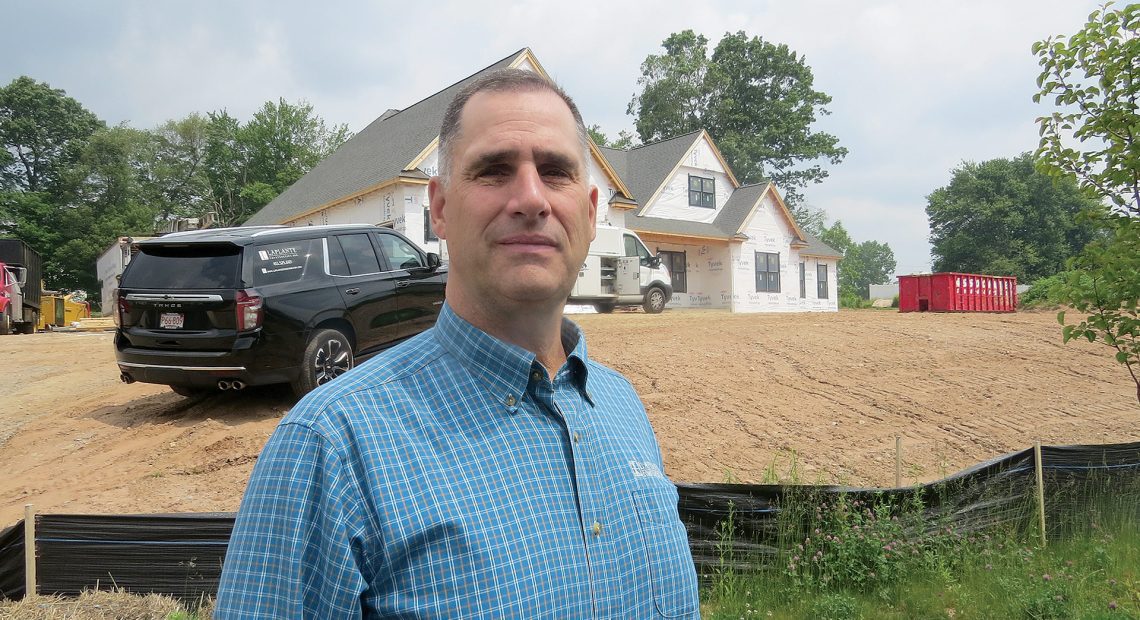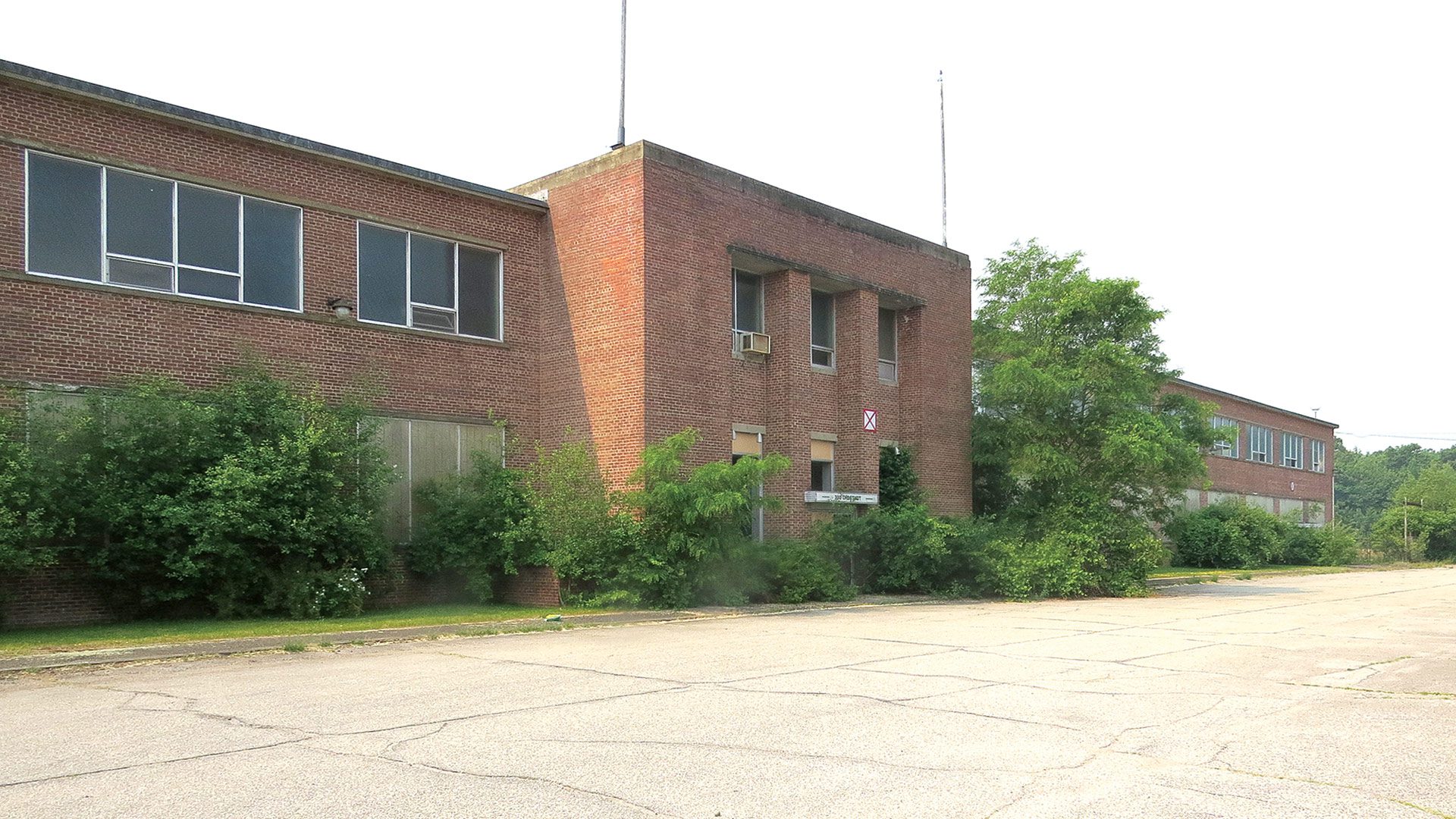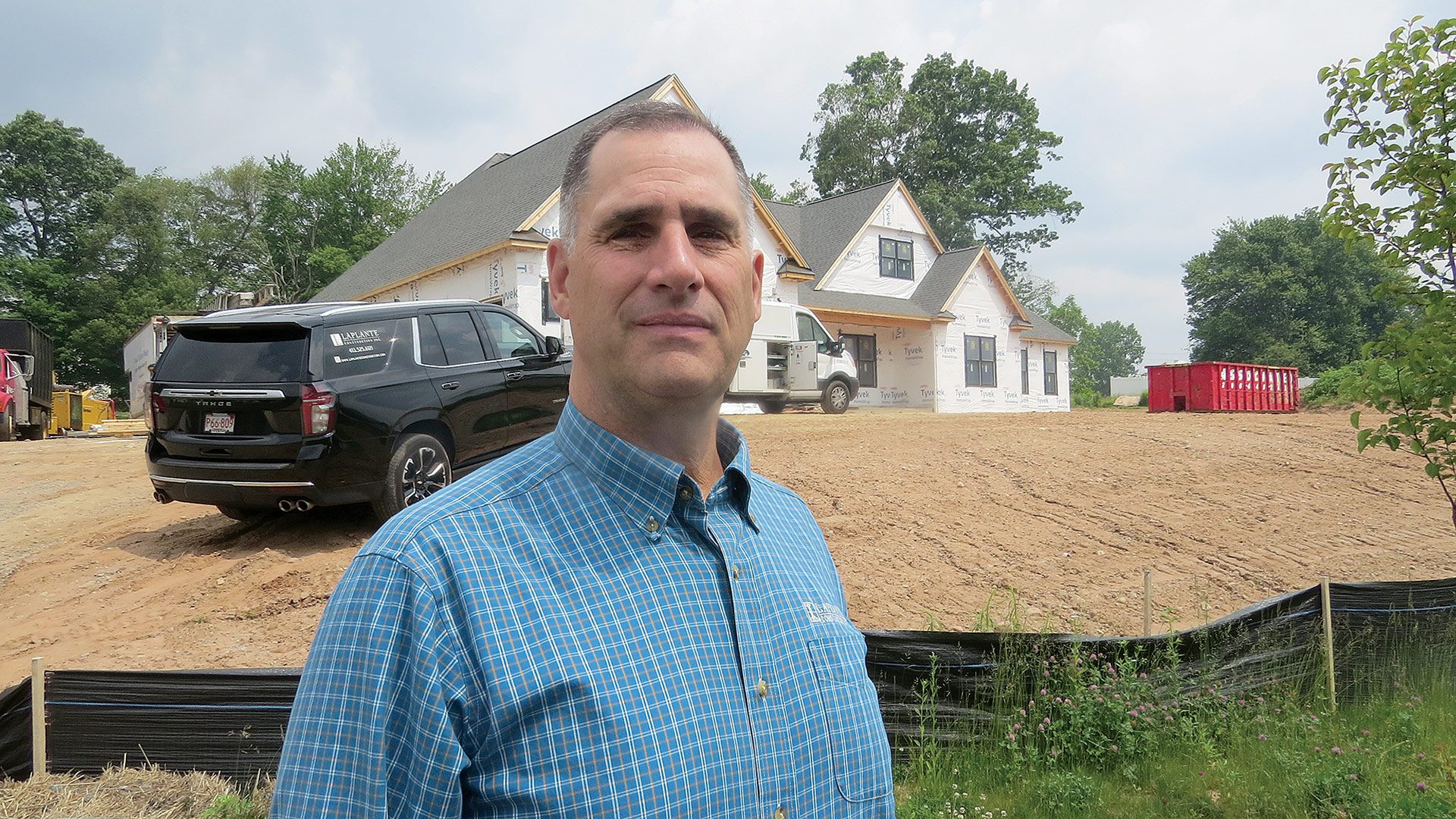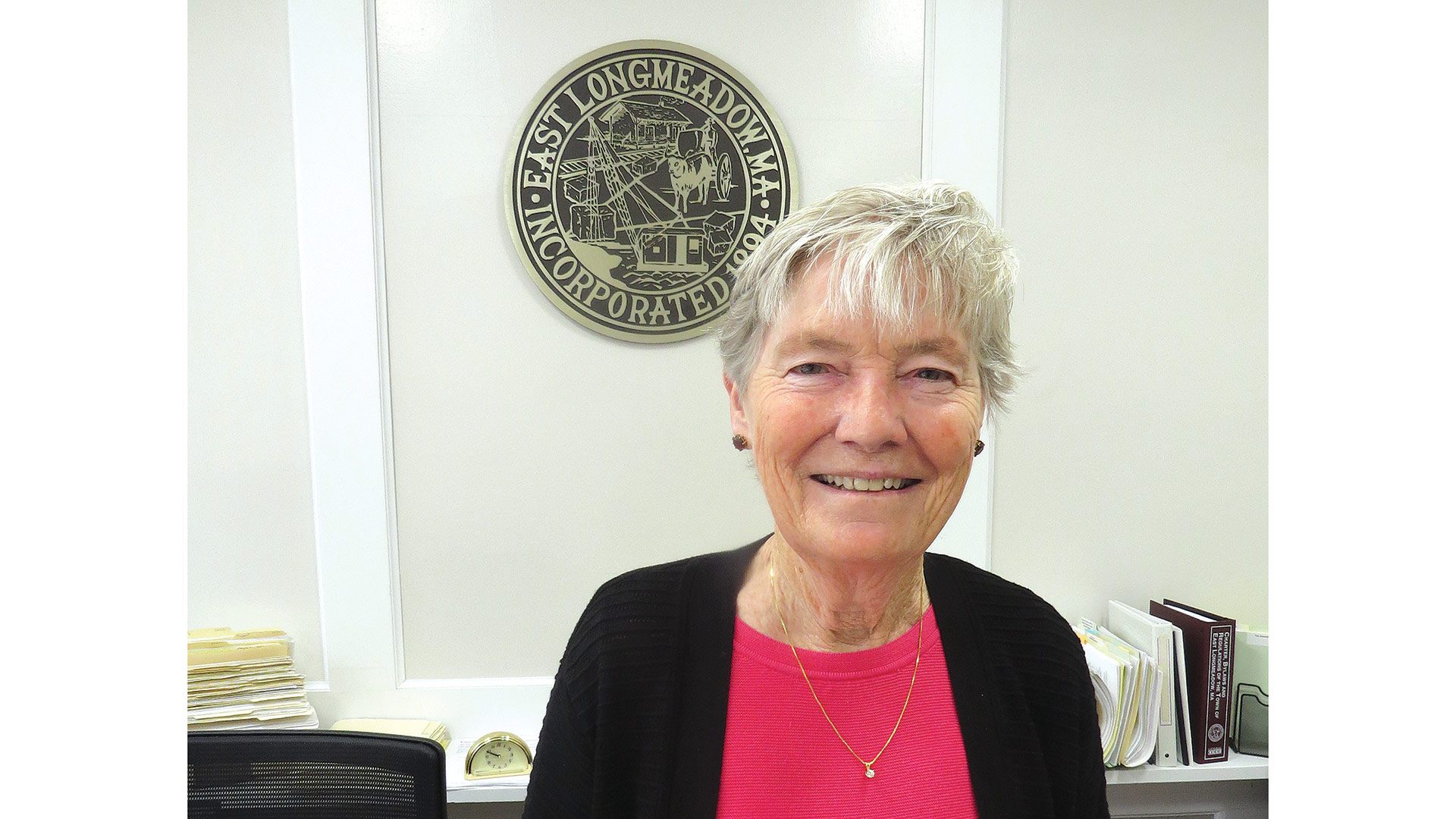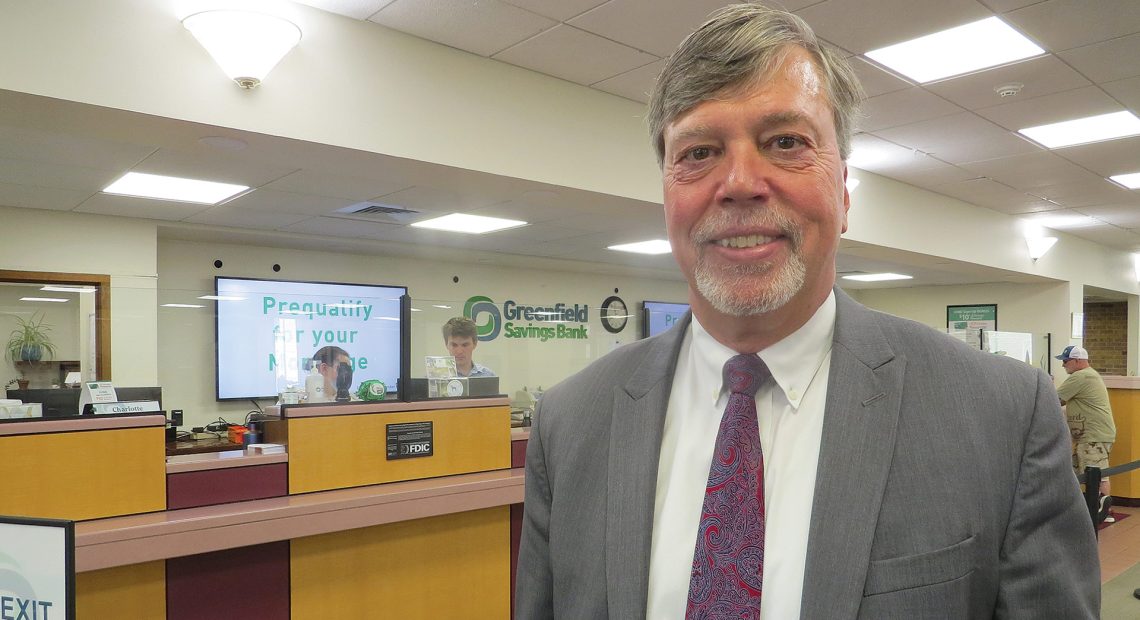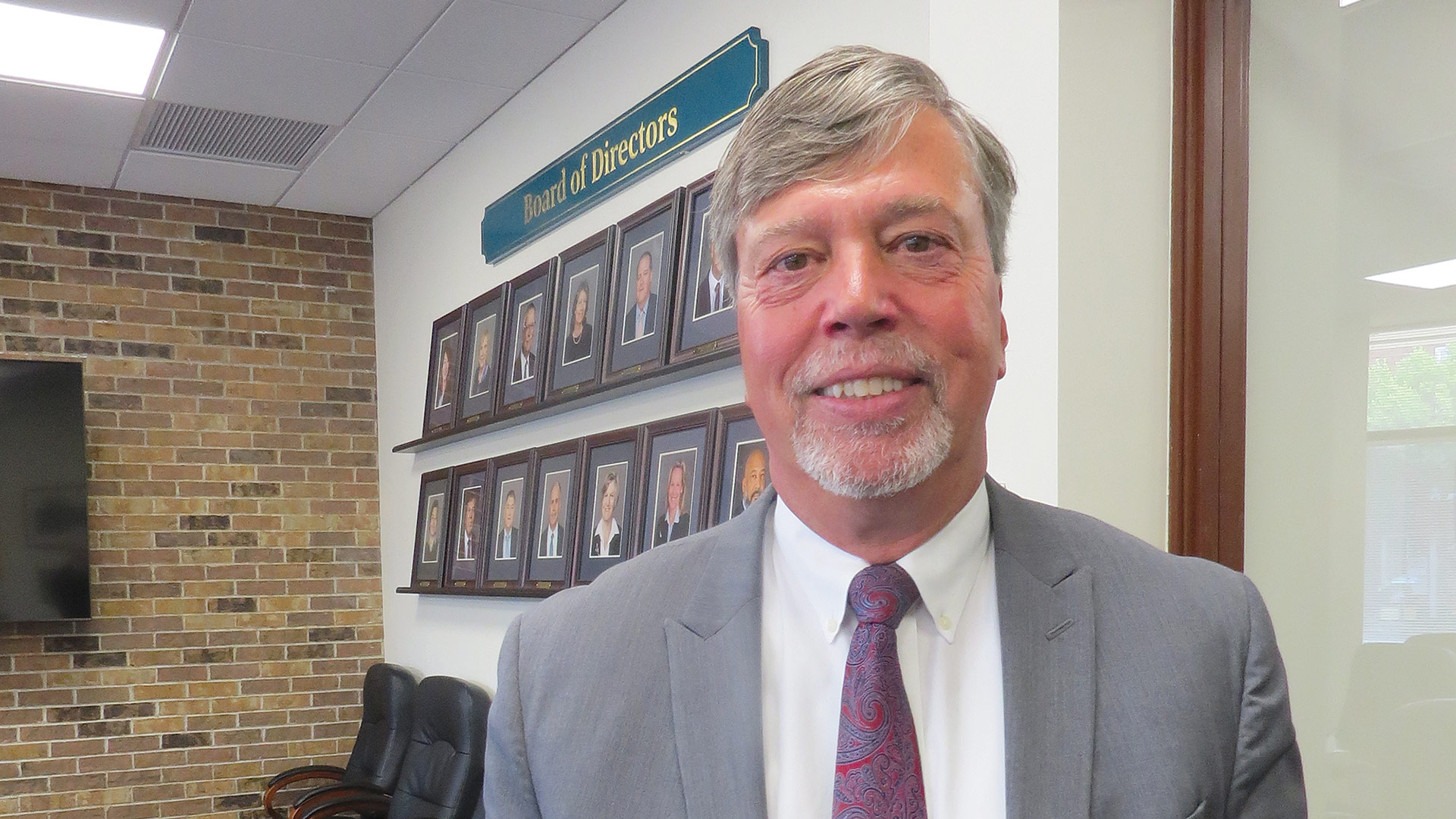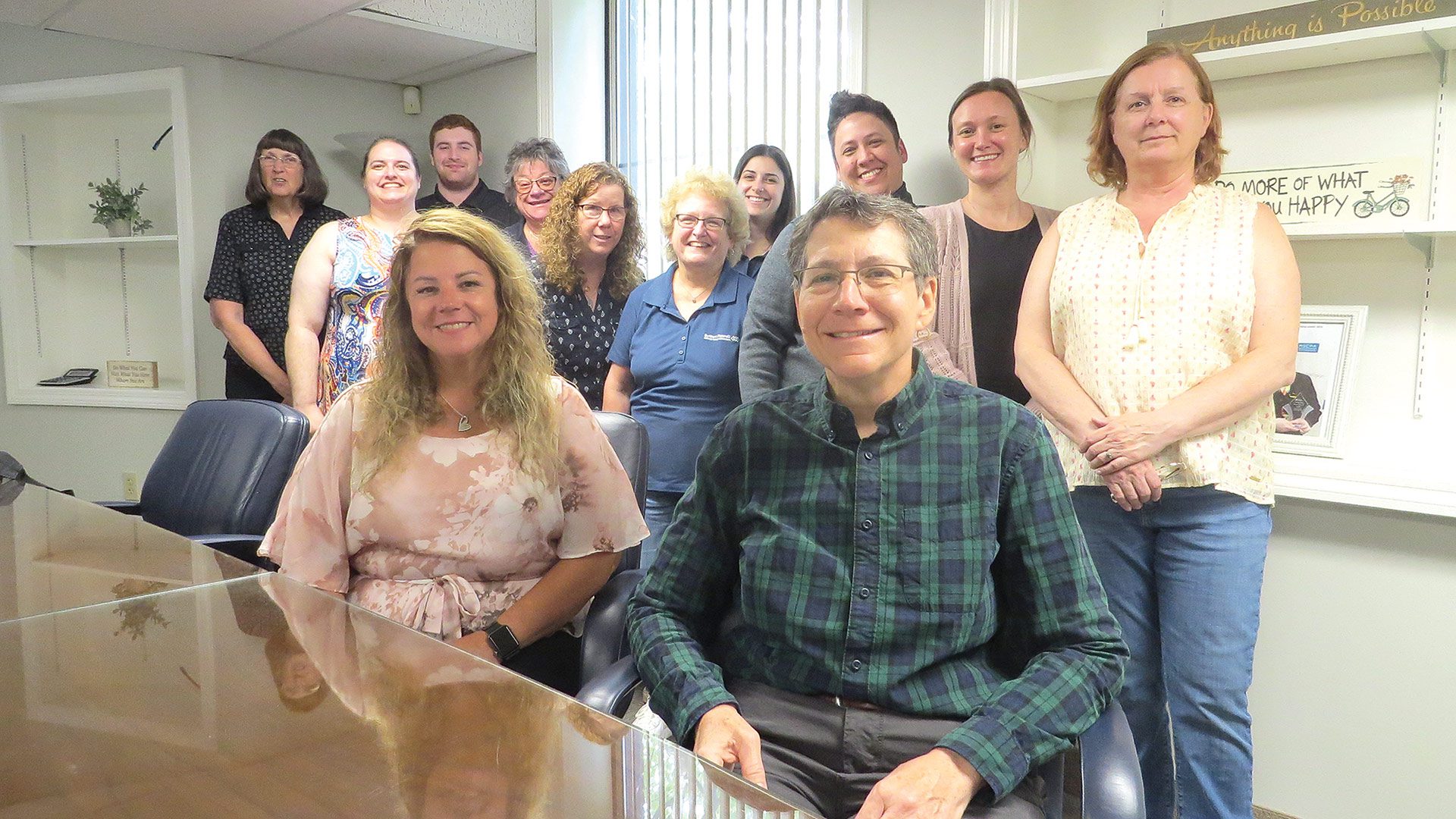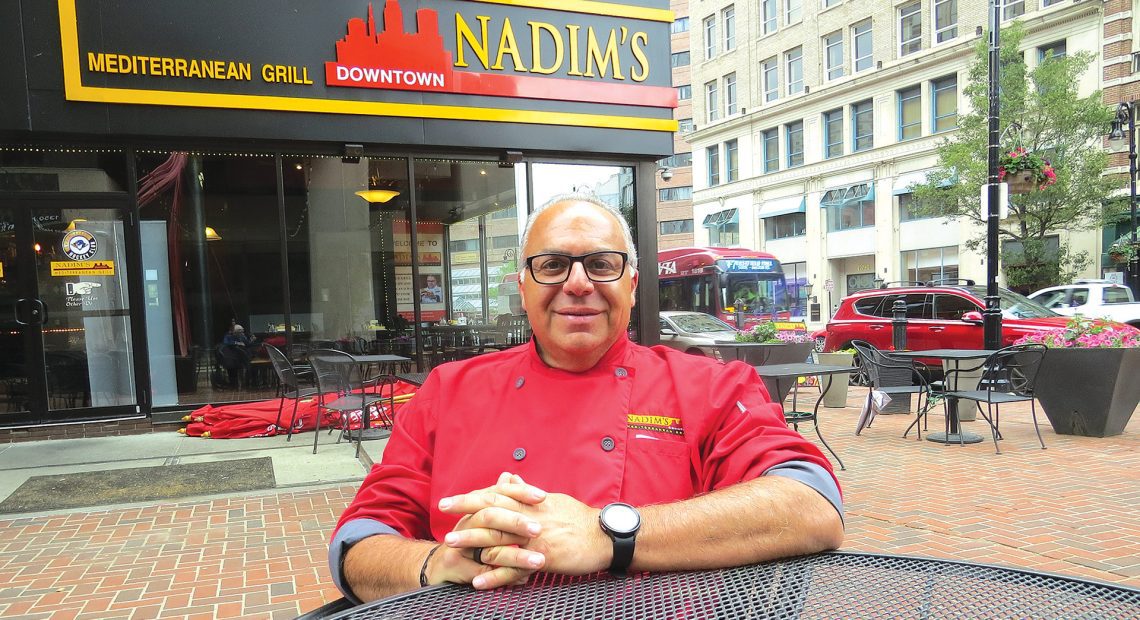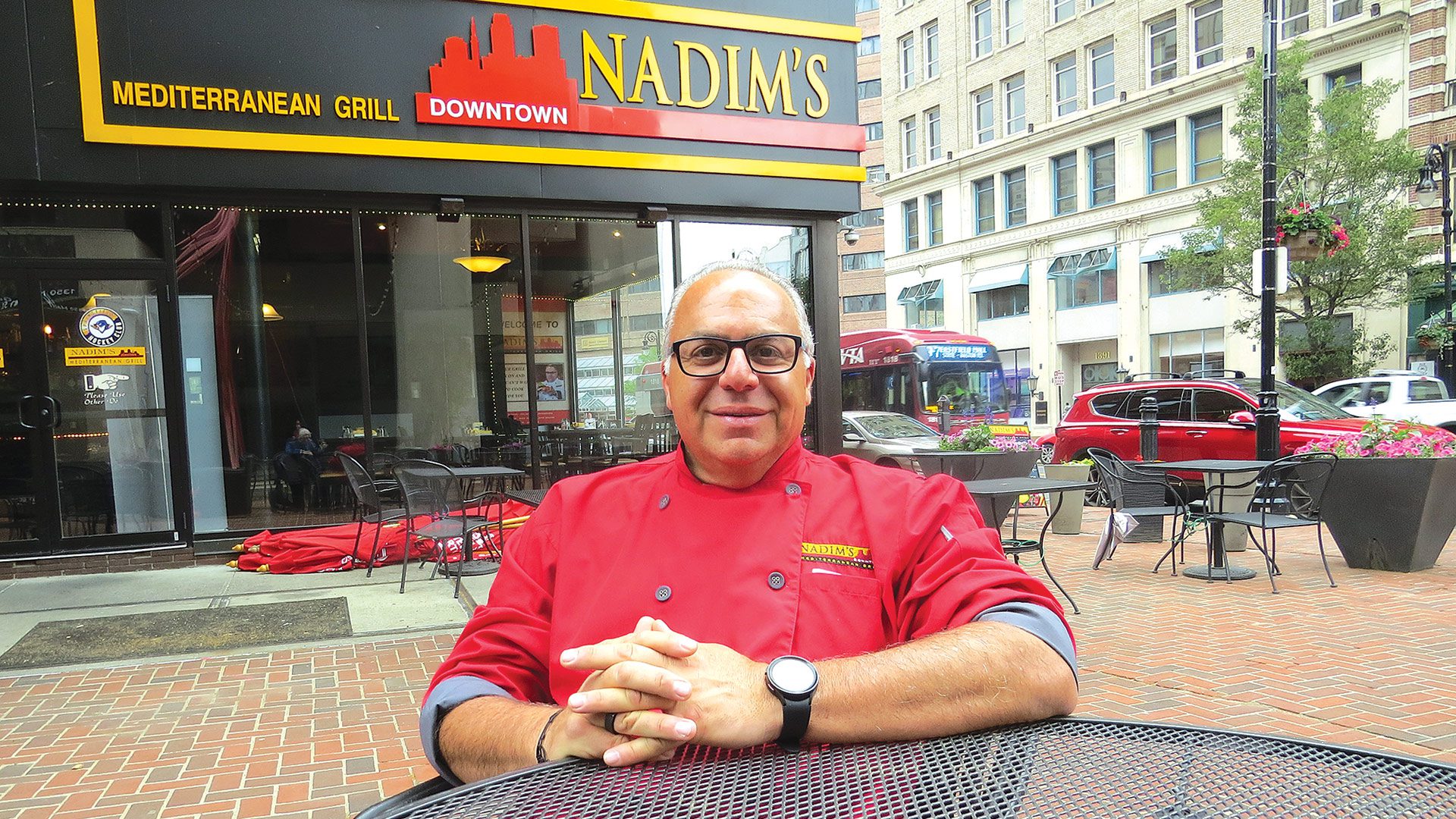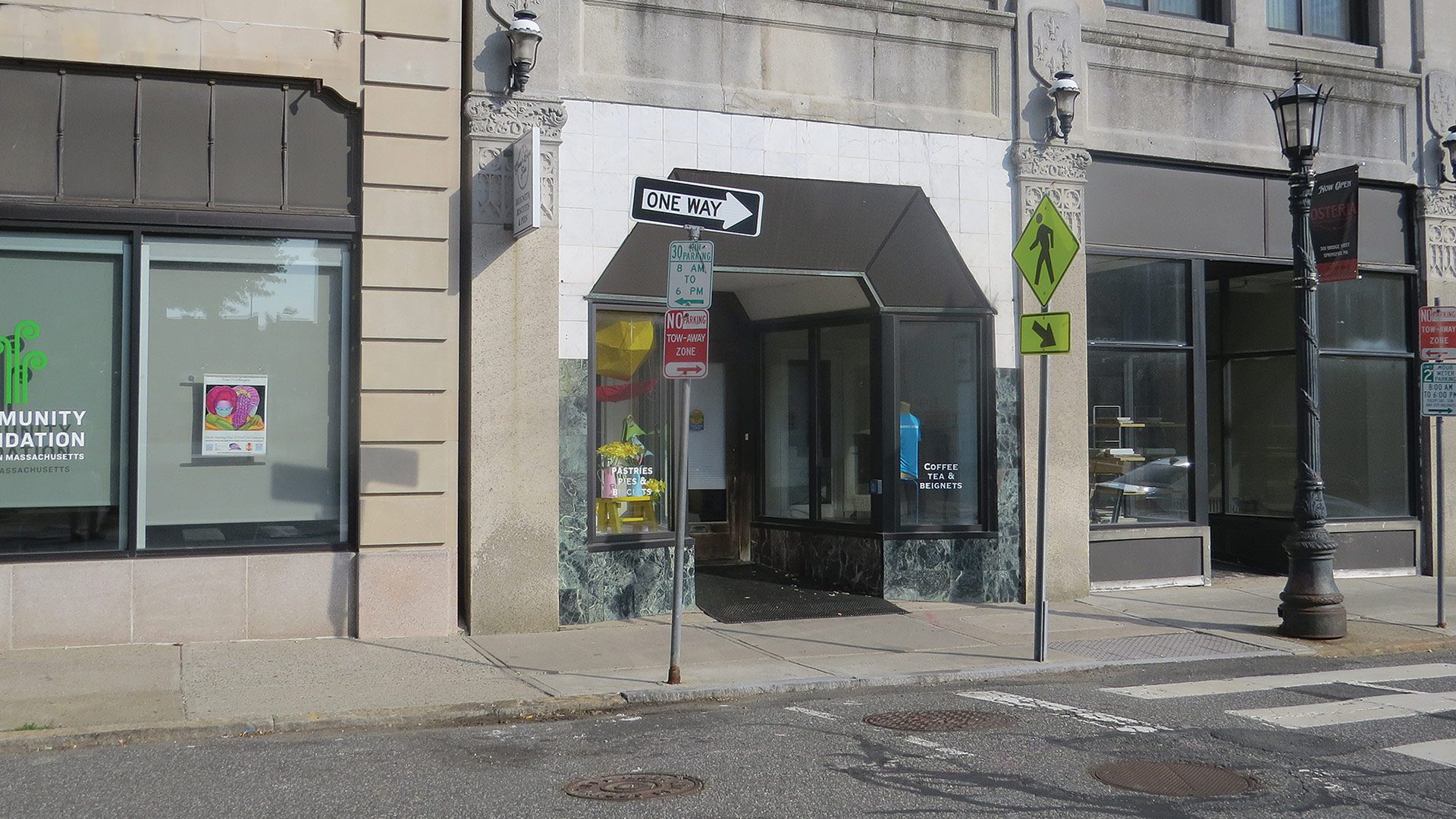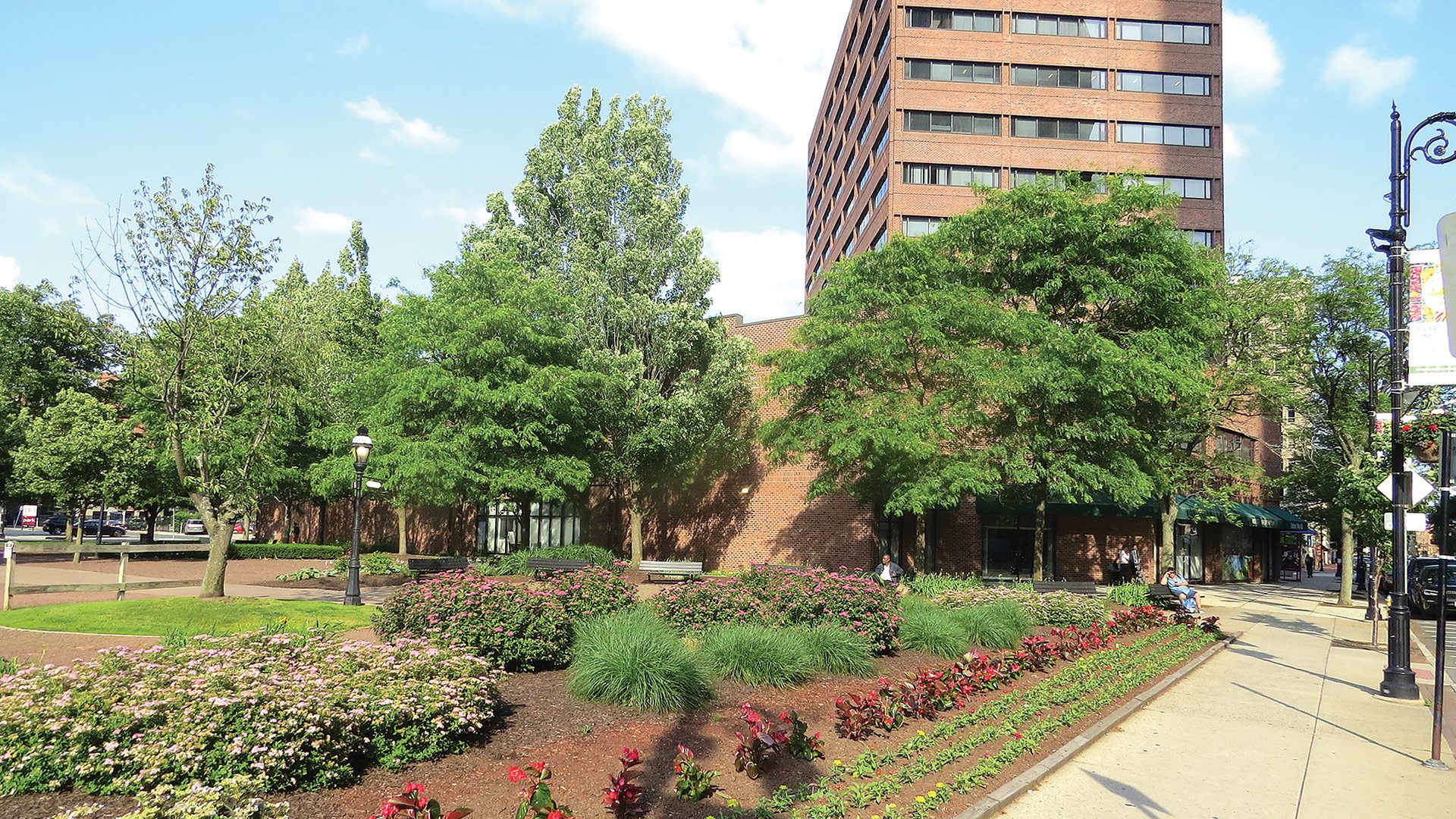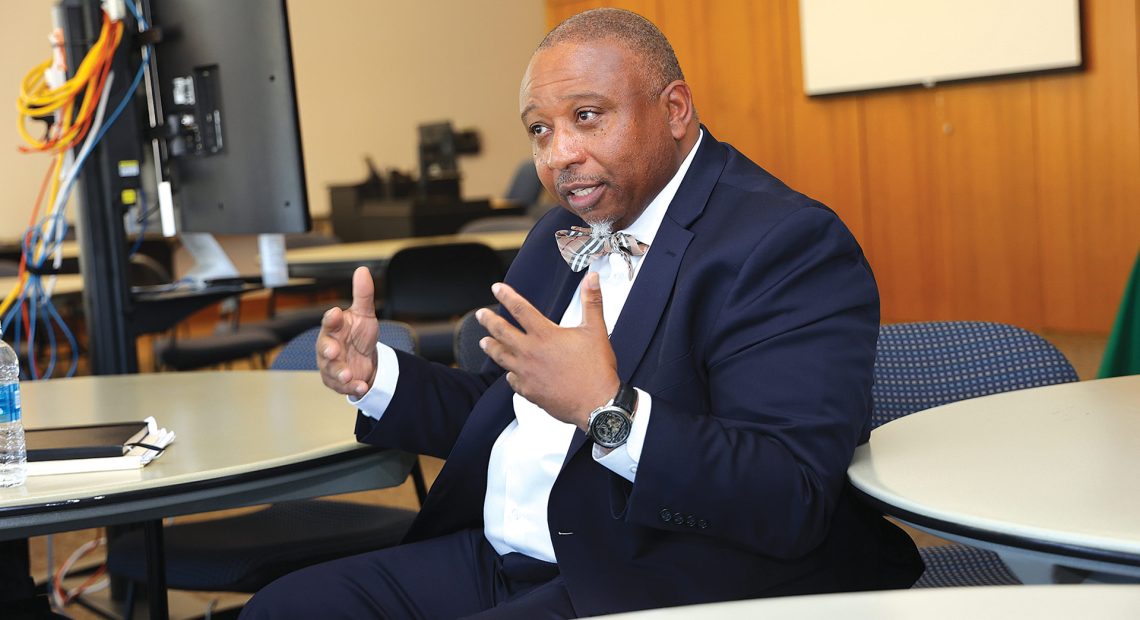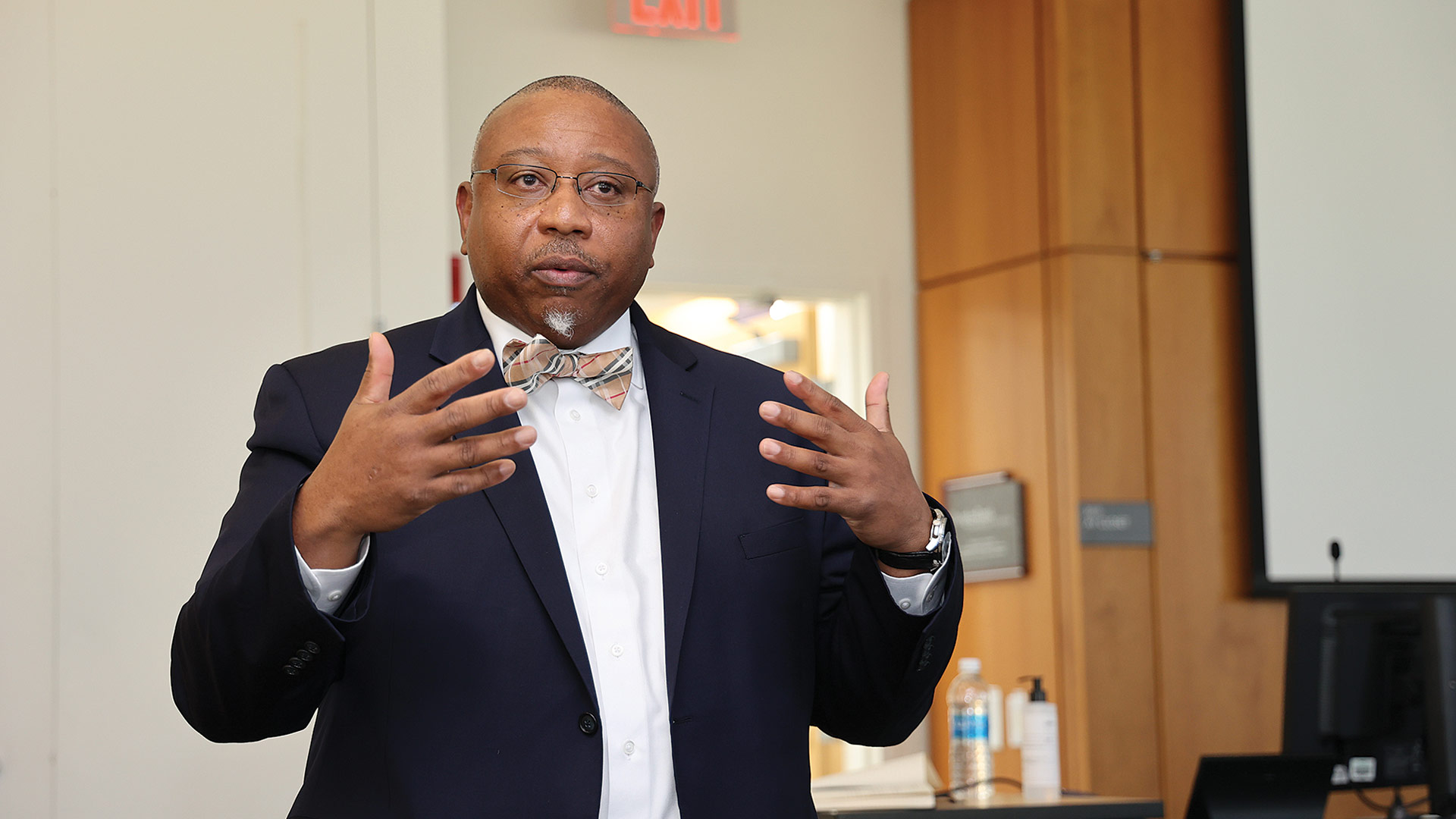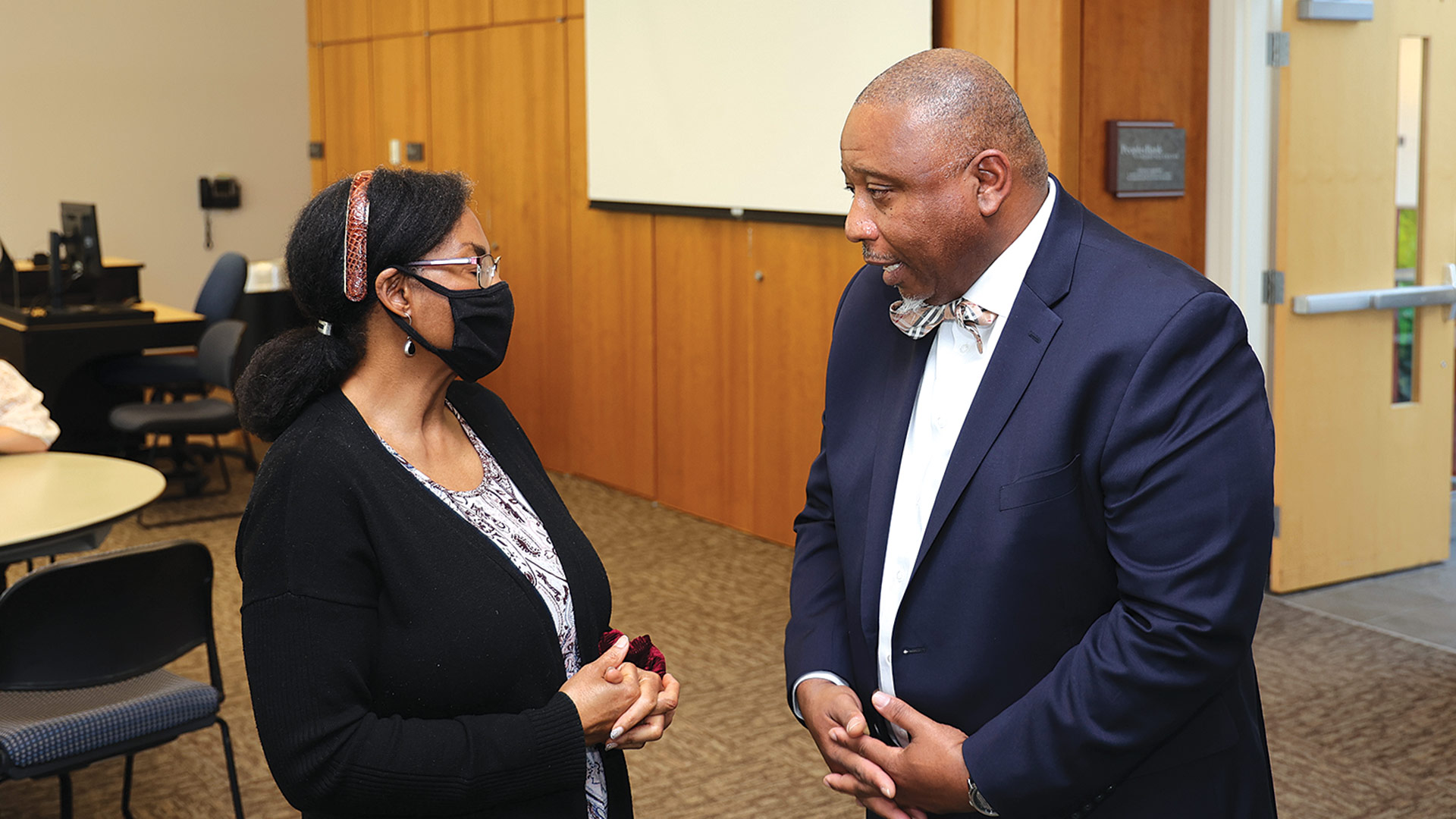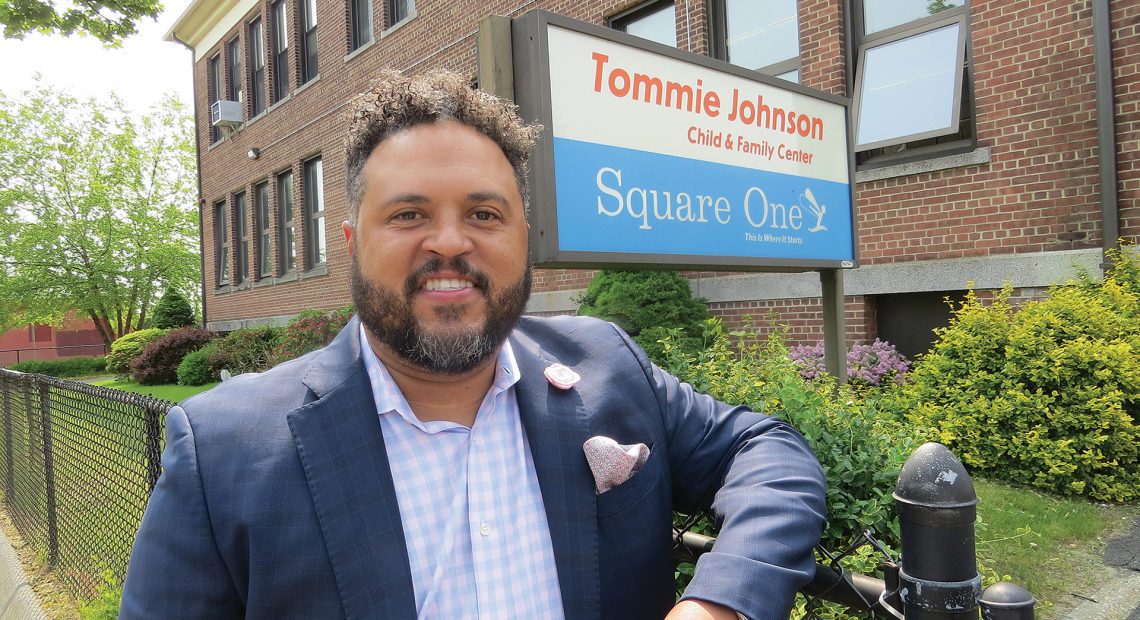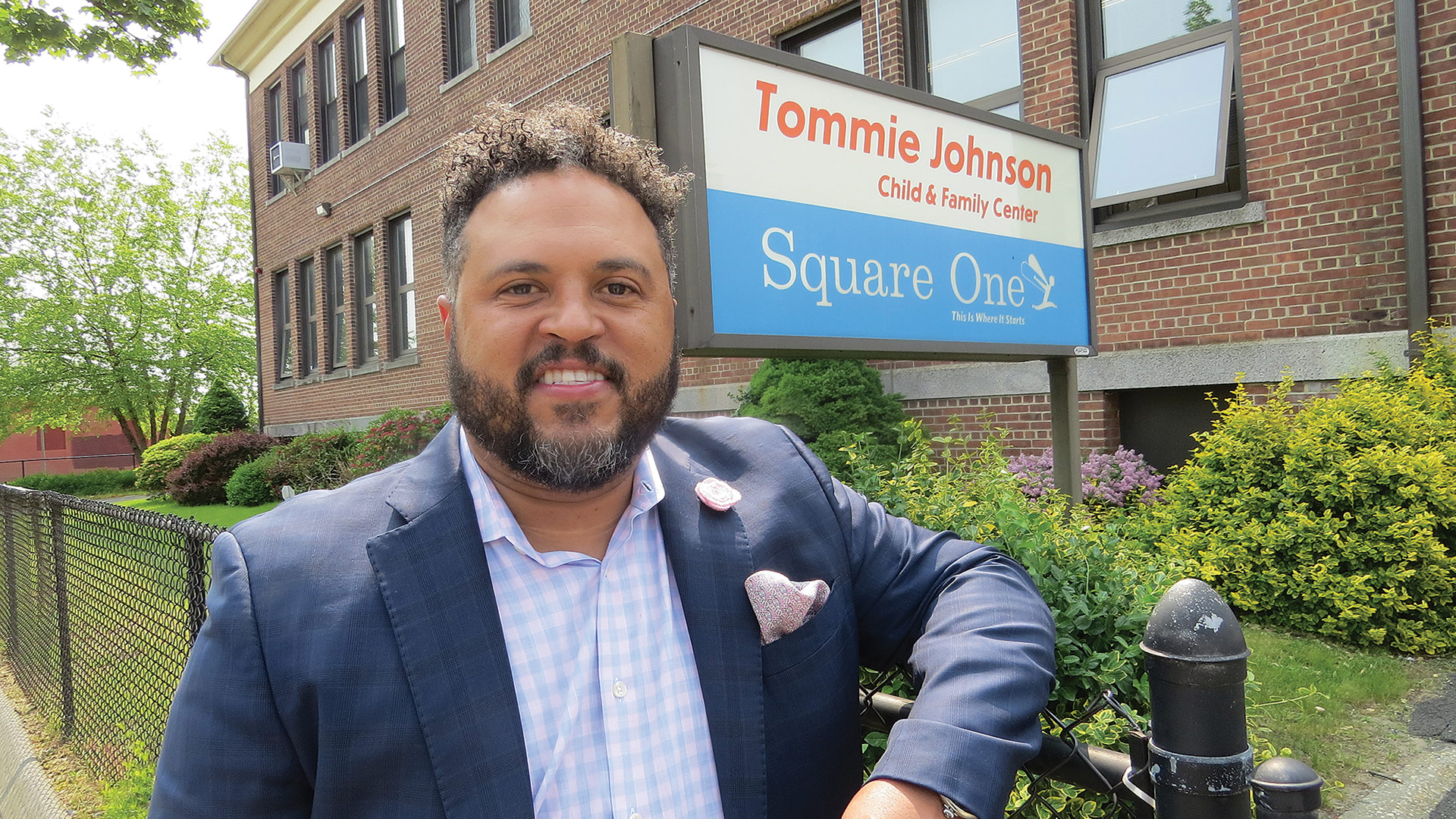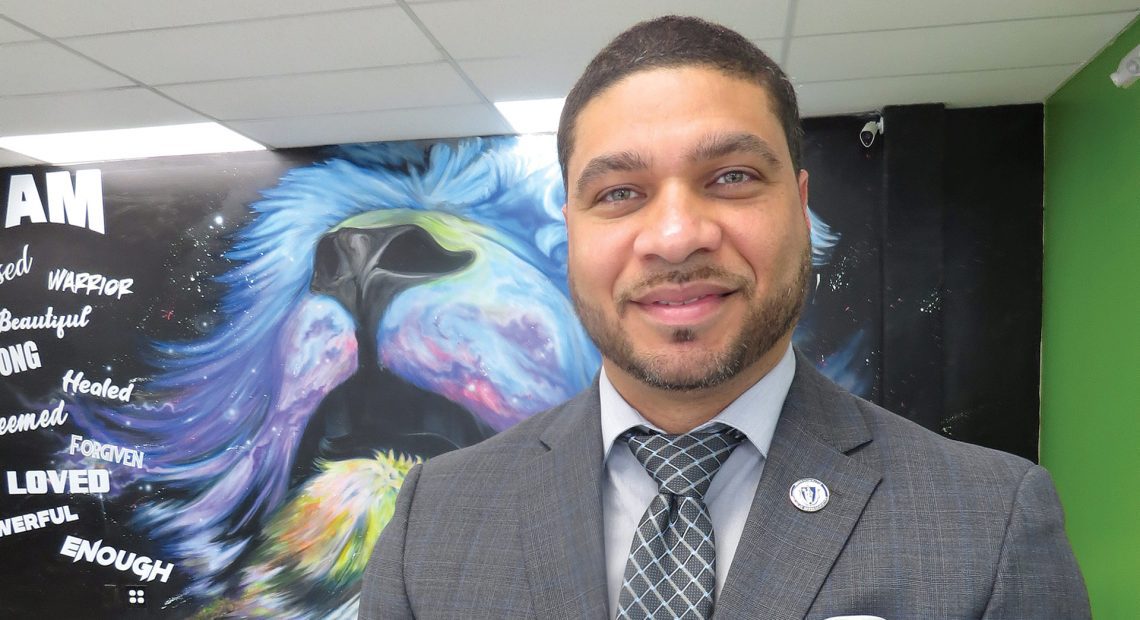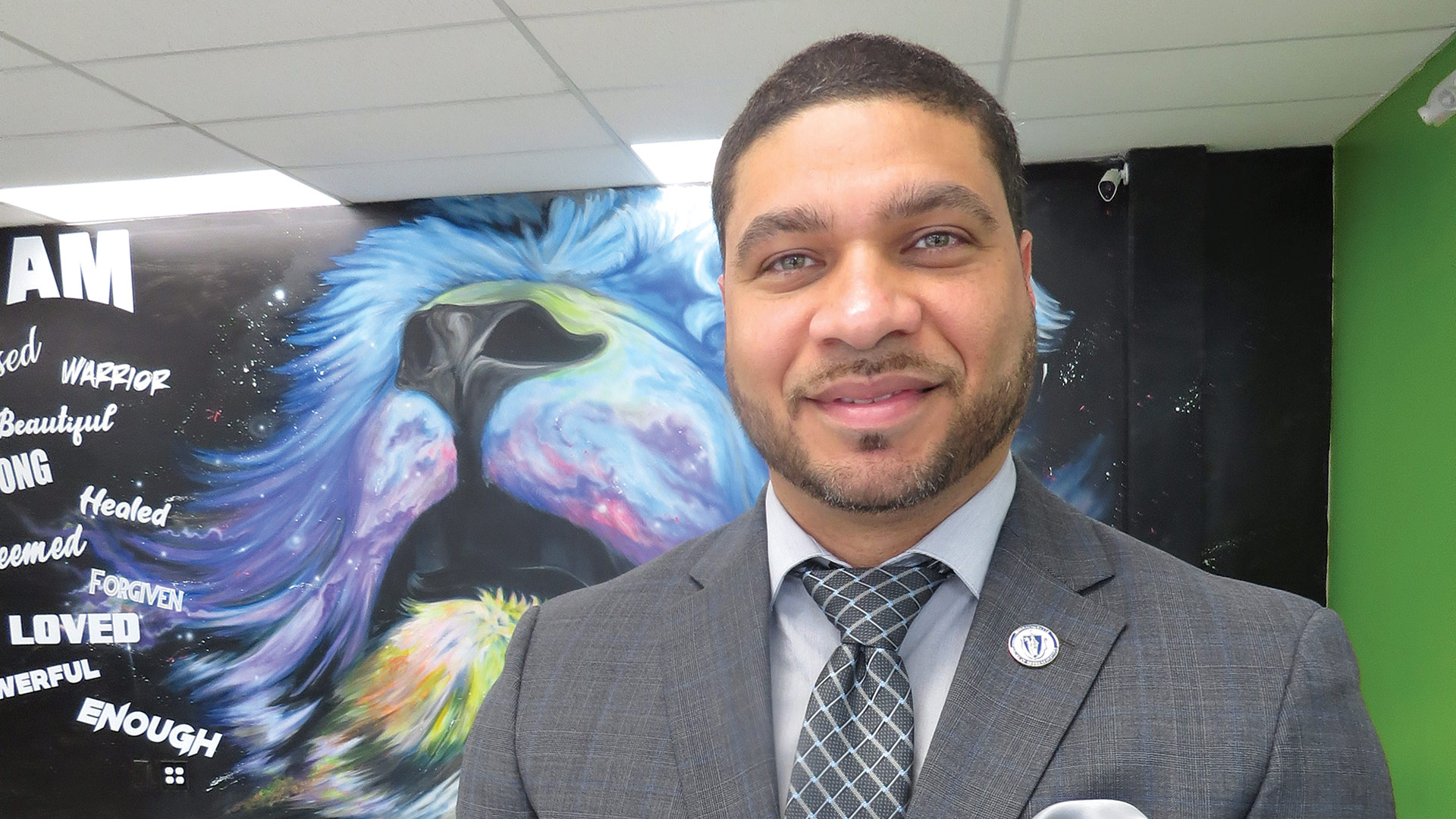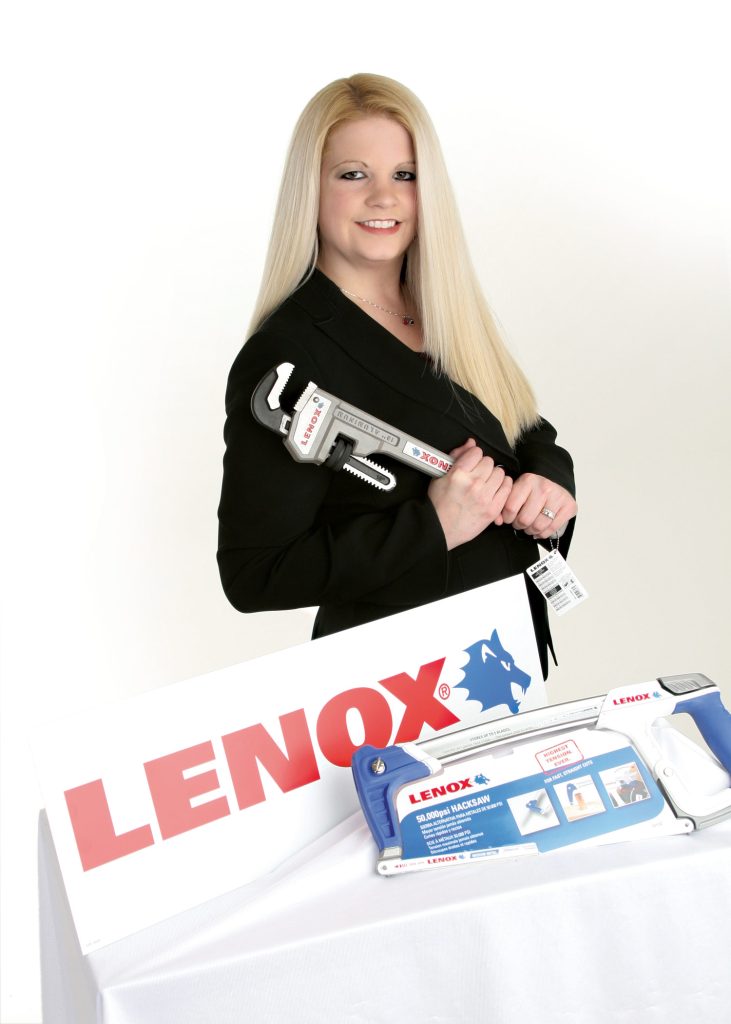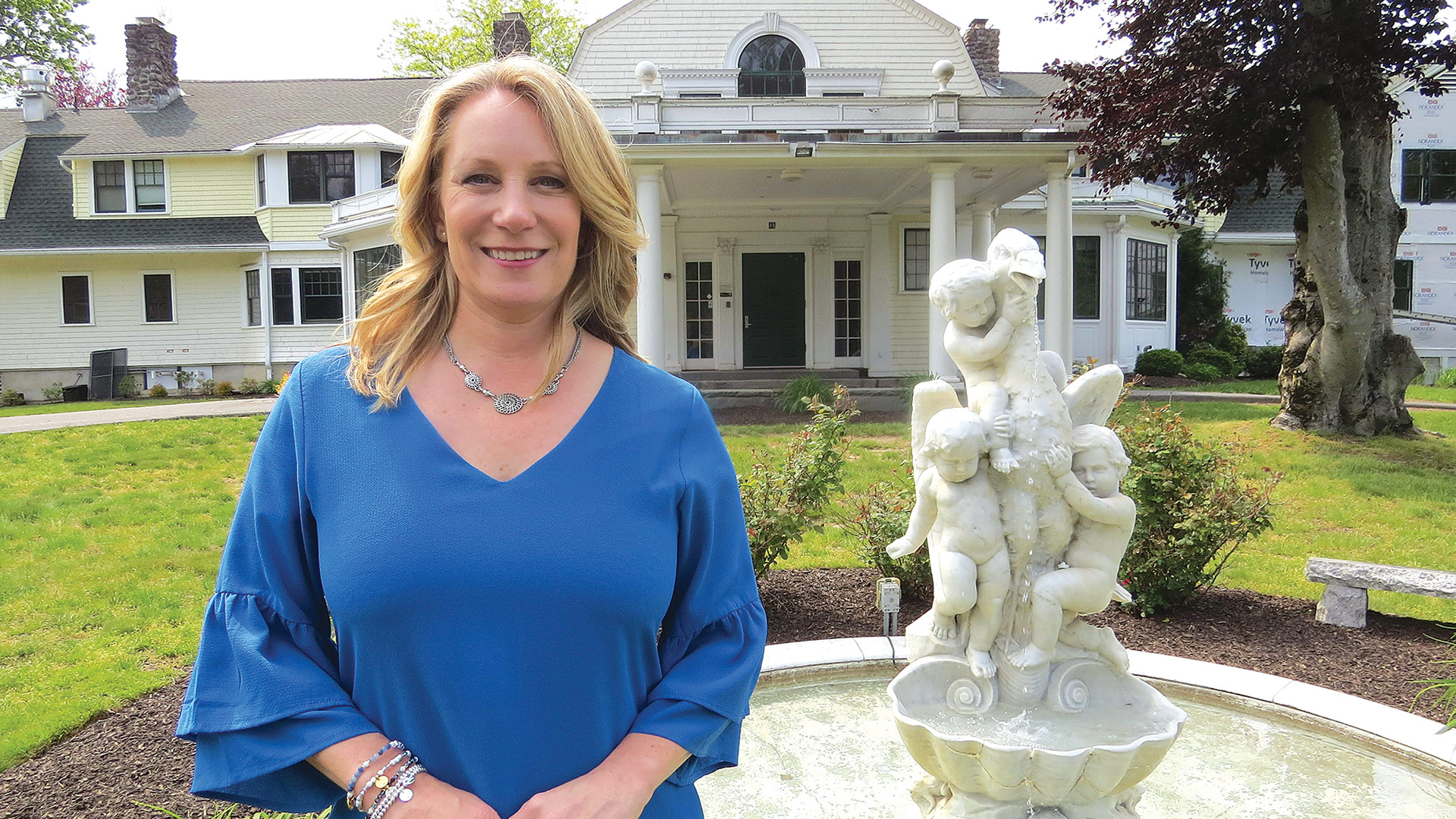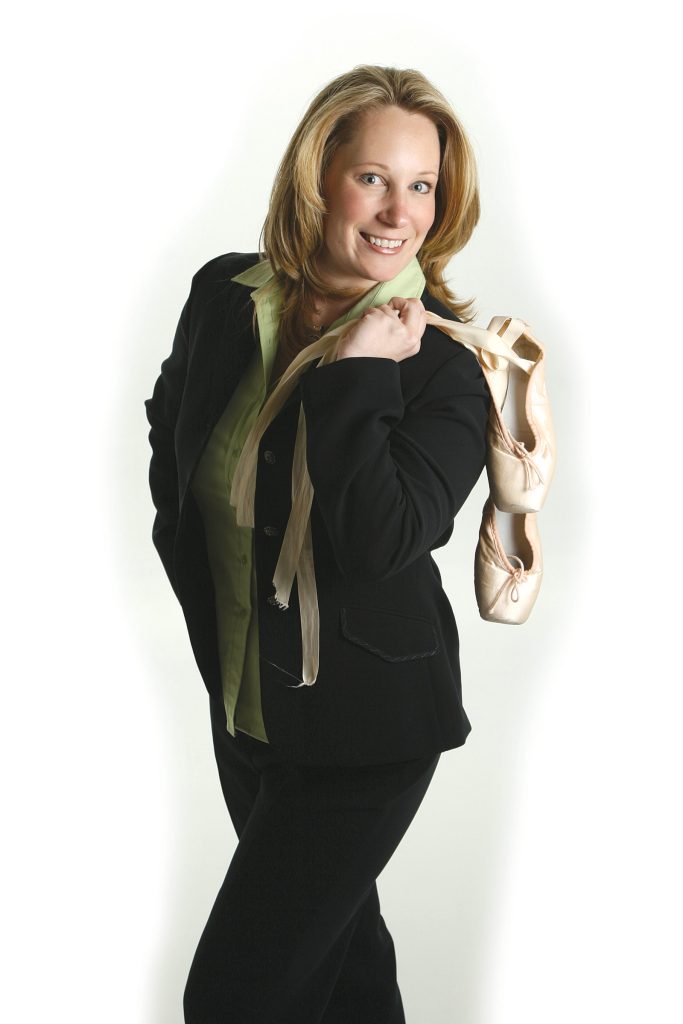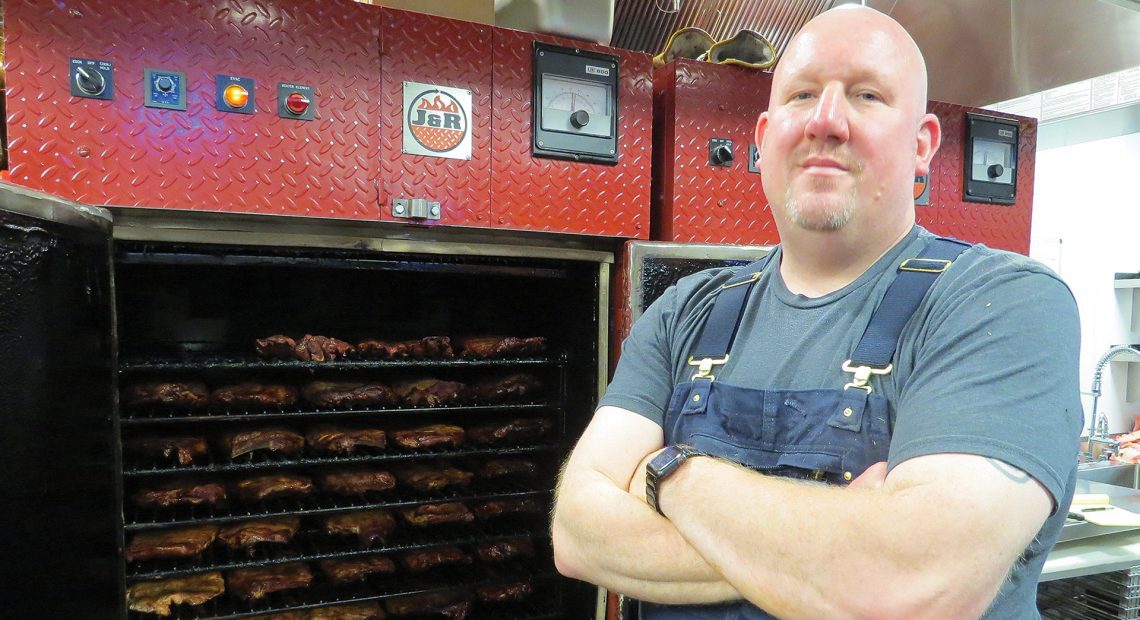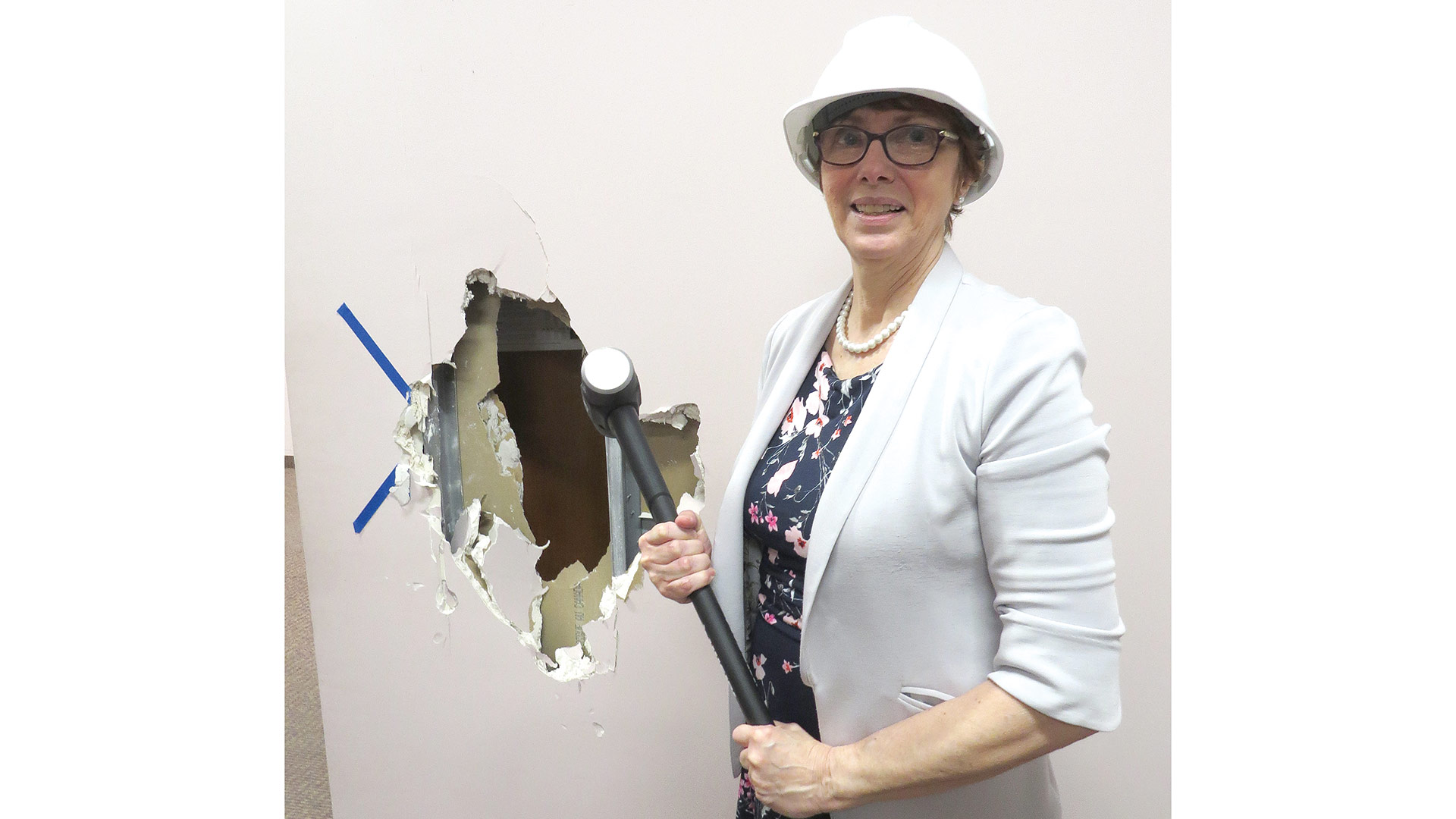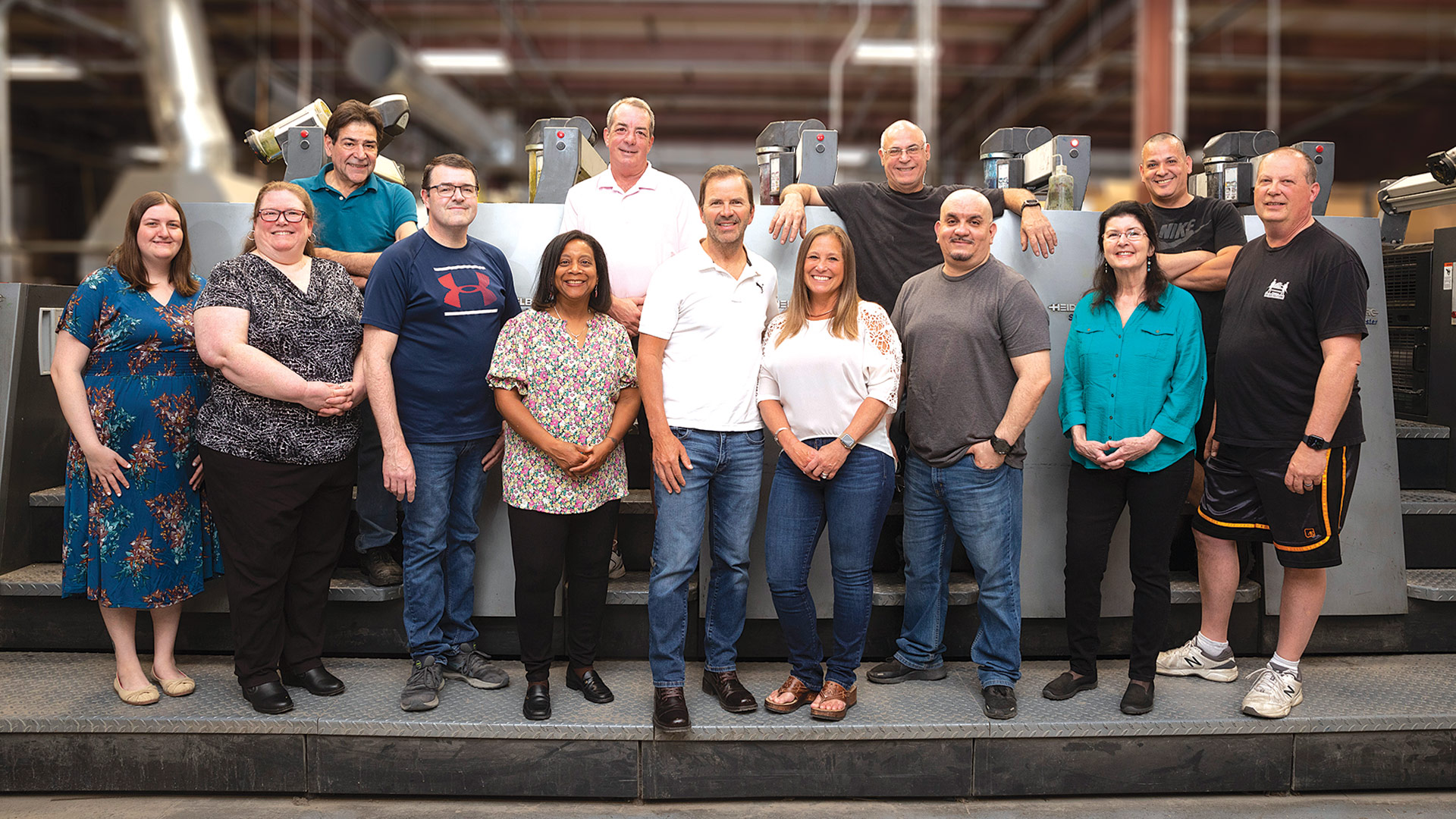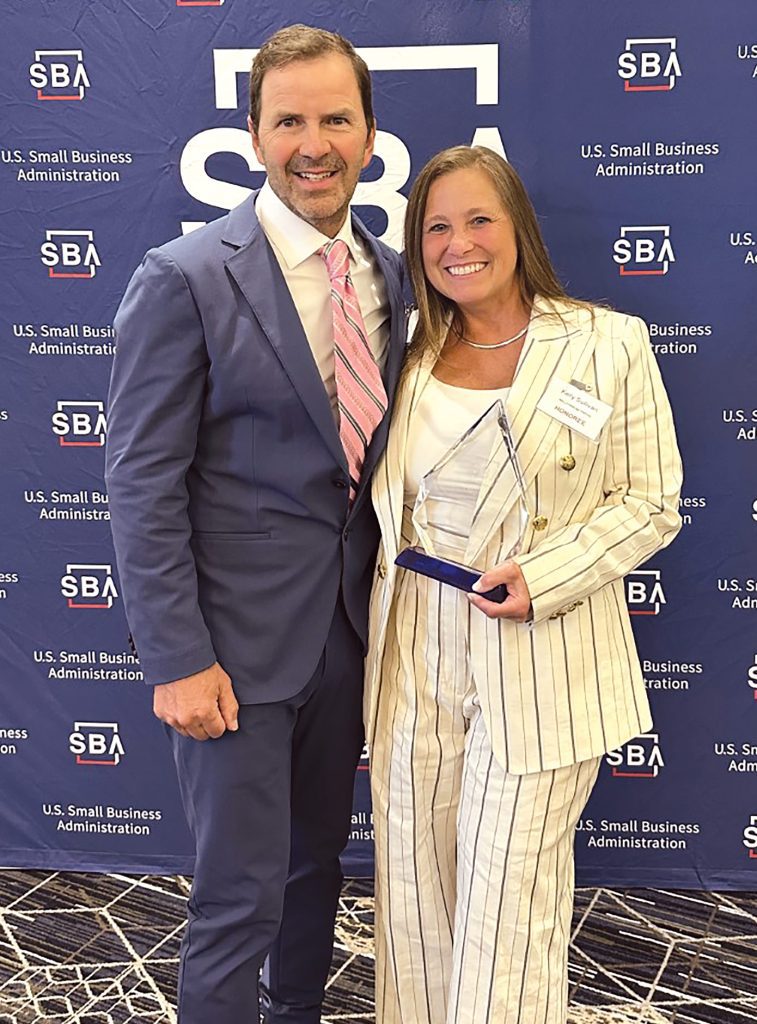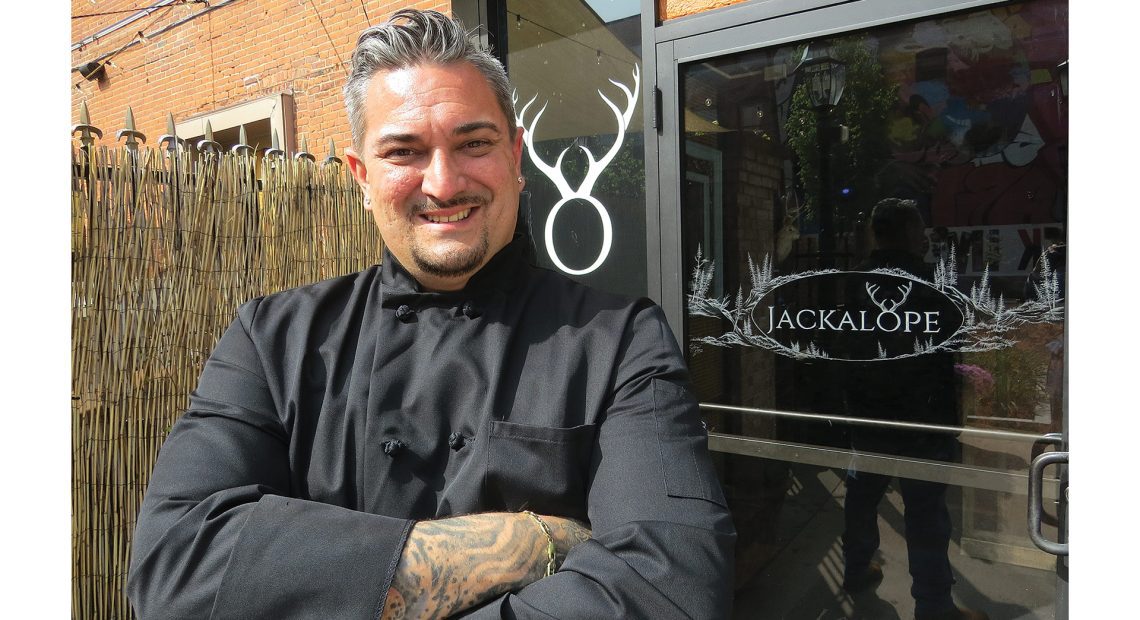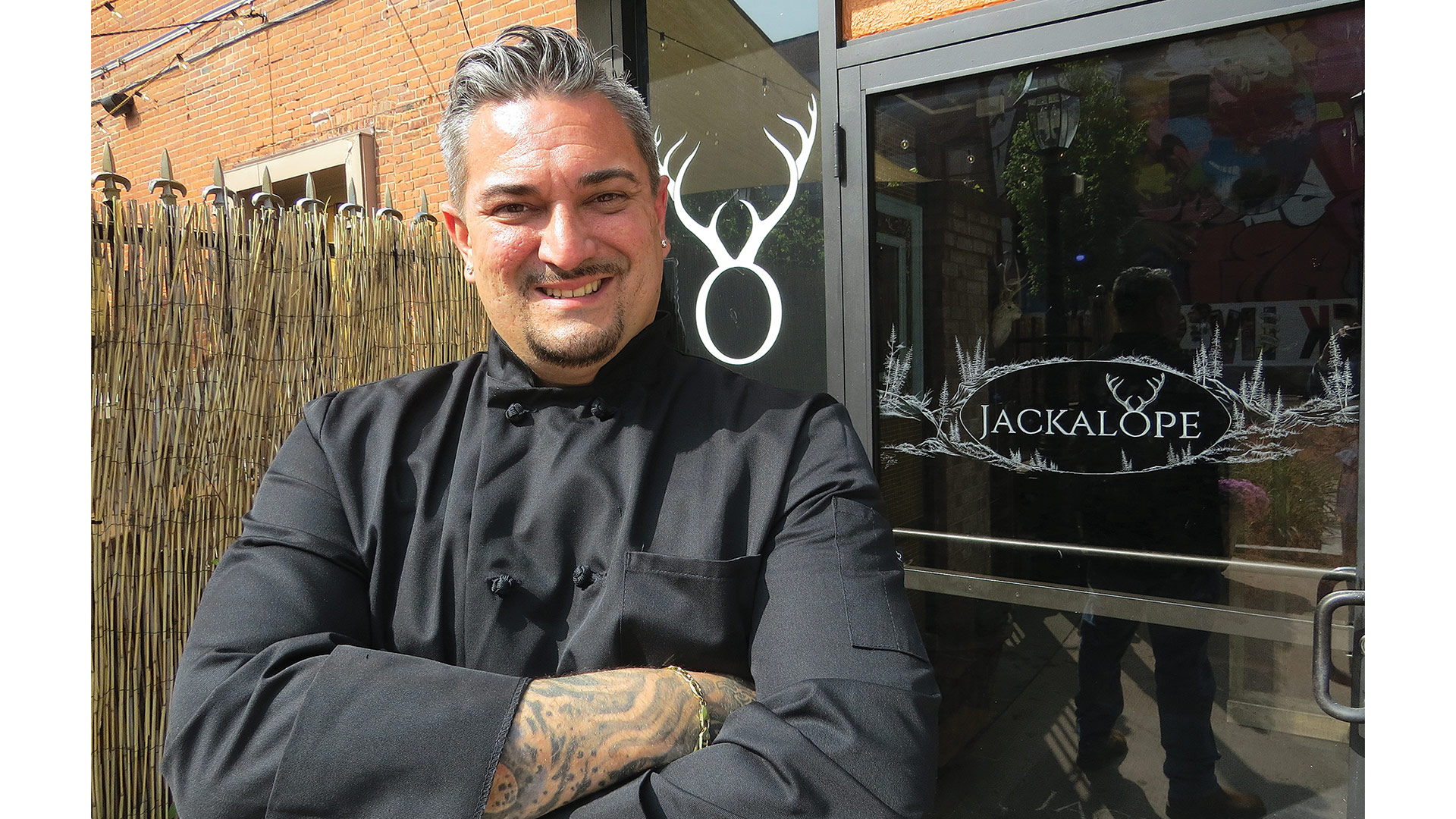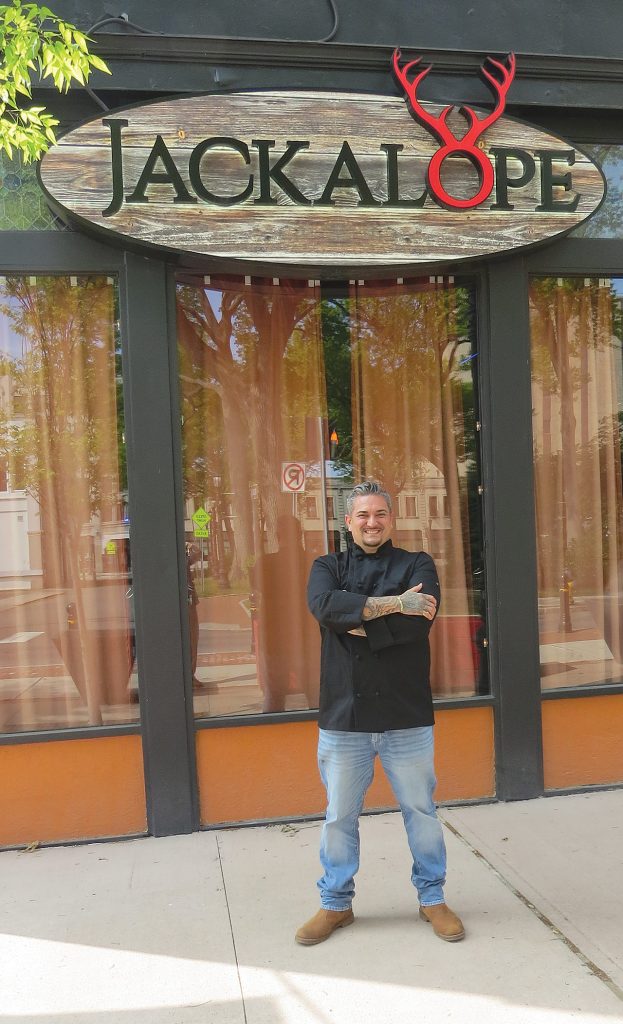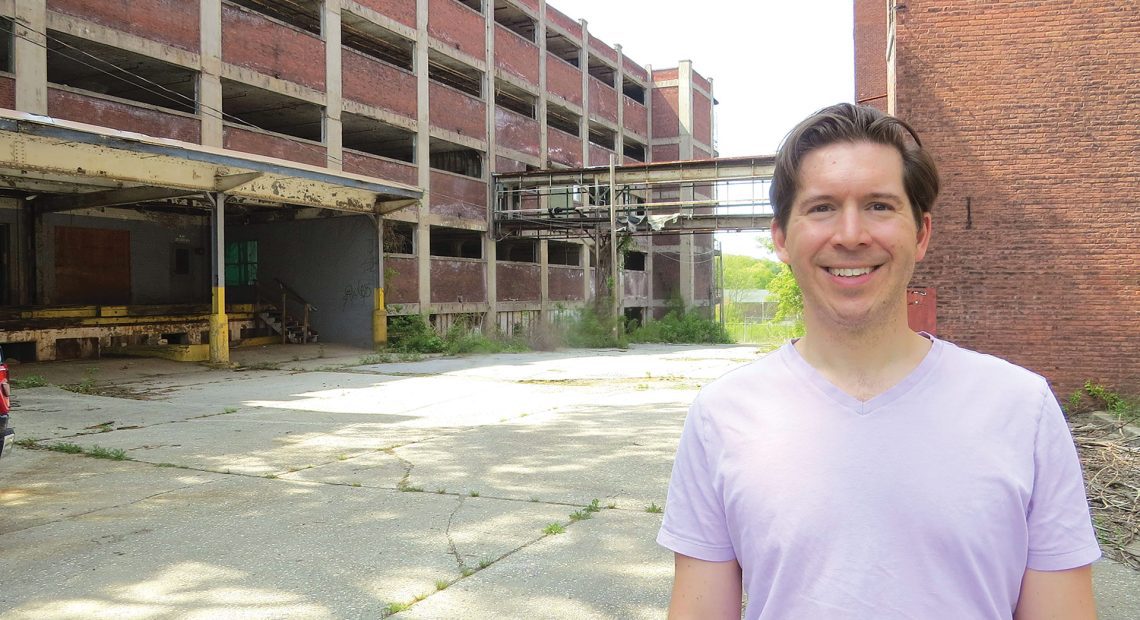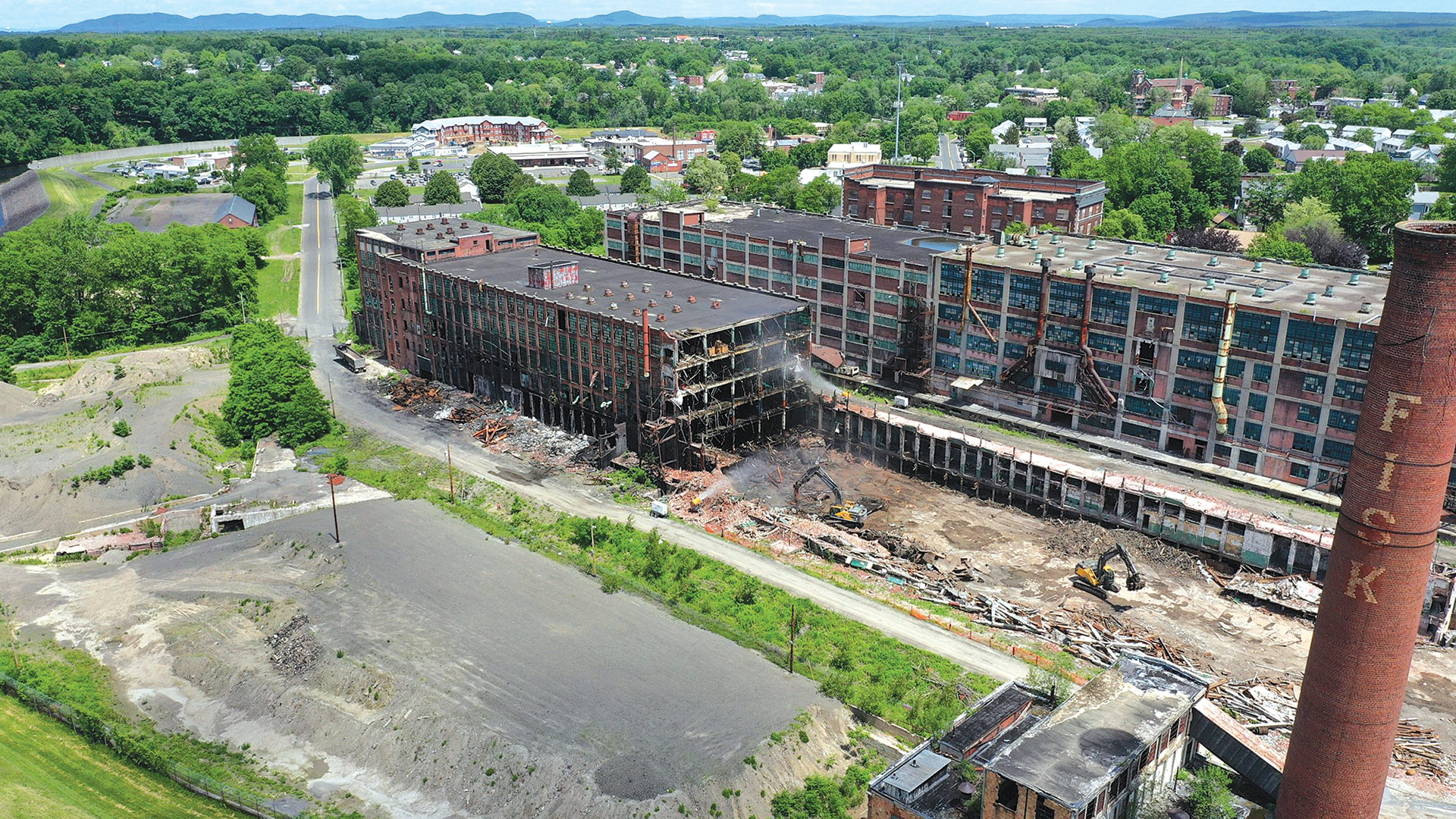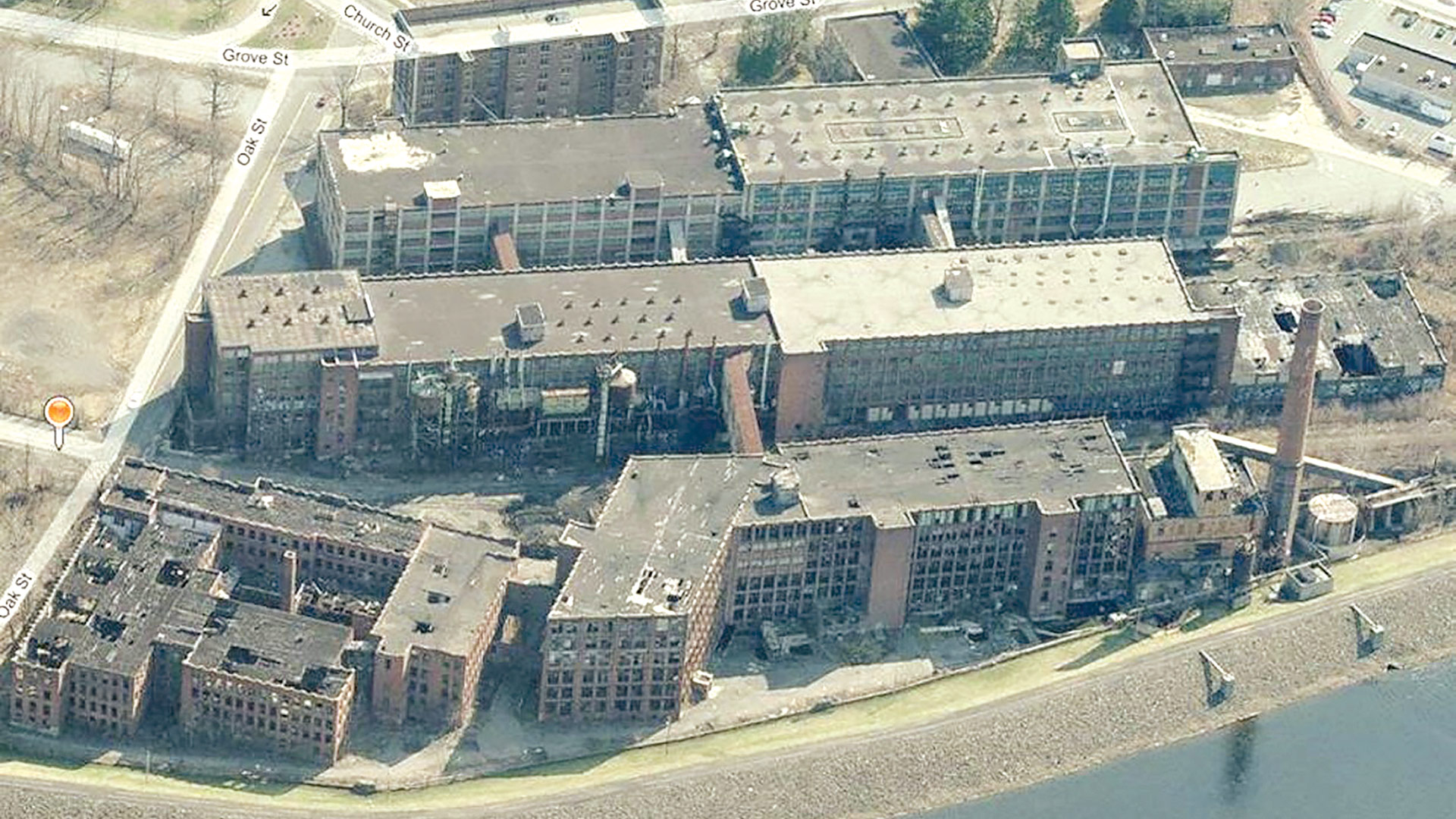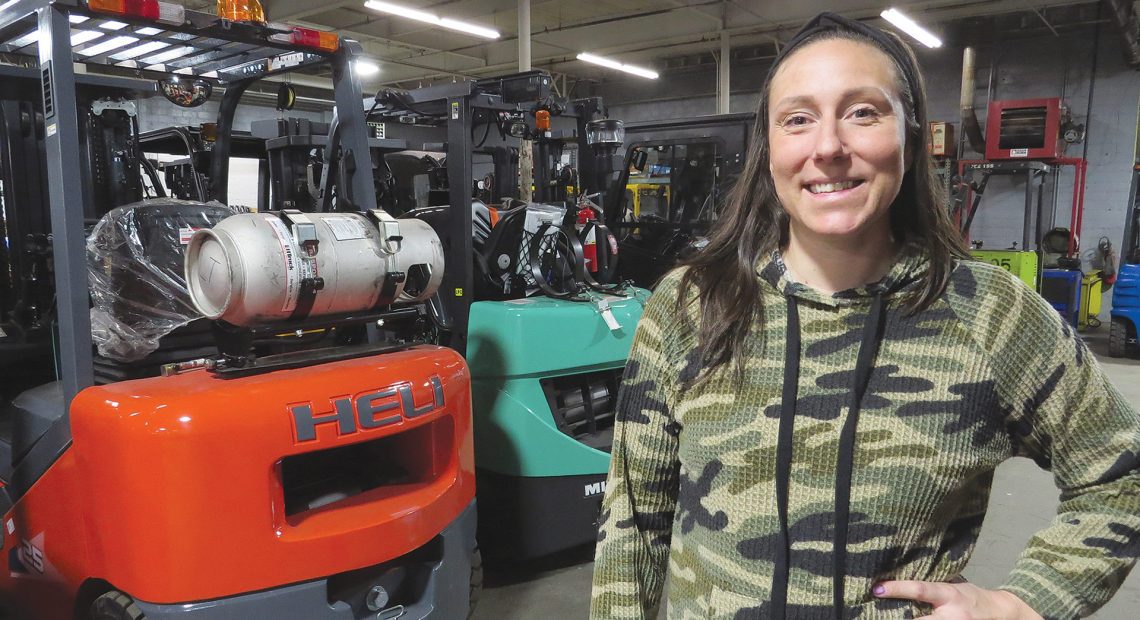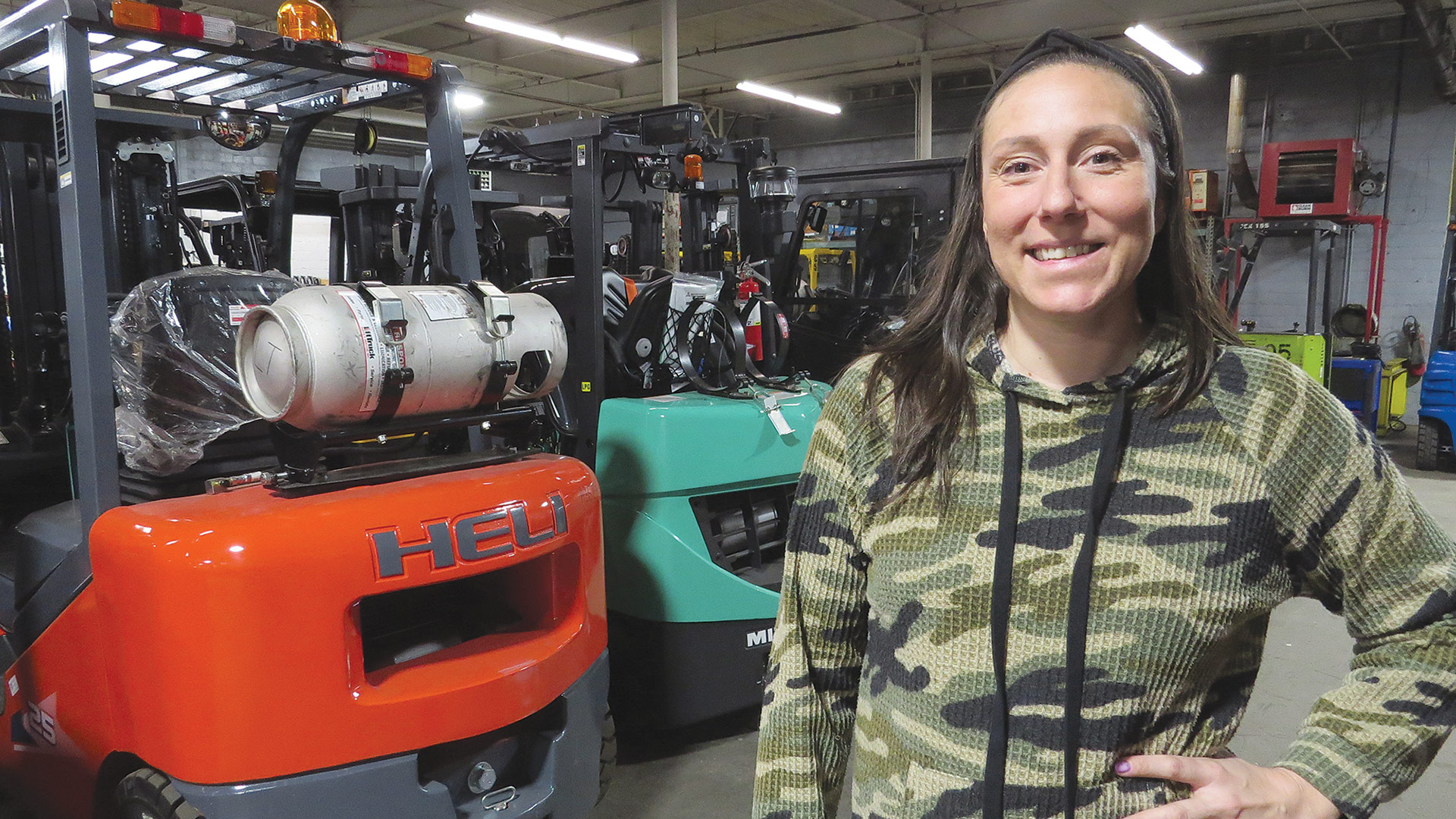Coming to a Head

Brewer and owner Matt Tarlechi
Matt Tarlechi says many people assume that he found a home for his fledgling brewery and then attached a name that spoke to that location.
Truth is, he and friends had long before settled on the name Abandoned Building for this venture — he’s from Philadelphia, and, apparently, there were a lot of abandoned buildings there at the time — and then went about securing a home that, well … fit that description.
He found one, sort of, in the complex of mills on Pleasant Street in Easthampton. The spot chosen, in the sprawling Brickyard Mill, wasn’t exactly abandoned, but it was vacant, having last been occupied by a manufacturer of plastic bags and similar products.
A decade or so after settling in, Tarlechi and a growing staff now numbering 14 have found more than a home. They’ve found a place — among the growing number of breweries in Western Mass., in the community of Easthampton and the surrounding area, and, increasingly, on the list of intriguing destinations on Friday night.
Indeed, in addition to producing a wide variety of brews with names like Dirty Girl IPA, Galactic Insanity (another IPA), and Cool Beans, a cold-brew coffee stout, ABB, as it’s called, has become well-known for its Food Truck Friday, which is just what it sounds like — the gathering of a few food trucks, some live music, and cold brews in the mill’s parking lot.
“We had a good amount of time to establish ourselves as a craft brewery that puts out consistent beers throughout the year. And we’ve had a lot of customers who have been here since early on that we still have today.”
“We set up tables and chairs, and we invite three to five different food trucks to come out,” he explained. “We also have live music and provide beer in the beer garden. We do it 16 times a year, and it’s become a staple in Easthampton for families, friends, and visitors.”
On a good night — and weather is usually the biggest factor — these events will draw more than 700 people to the mill, he said, adding that they have become part of the fabric of the community and succeeded in helping to make Easthampton, a former mill town that has evolved into a center for hospitality and the arts, into a true destination.
Ten years on, Tarlechi told BusinessWest, his brewery has really found its place, and the business plan essentially calls for more of everything that has gone into the success formula. And there are many ingredients — from the beers to the food trucks to the growing appeal of the created event space, which will soon host a wedding, but is better-known for wedding-rehearsal parties, showers, birthday gatherings, and the like.
Overall, the craft-beer landscape has changed considerably since ABB first opened its doors, with a huge increase in competition across the 413. But that competition has only helped in some ways, as we’ll see, and this venture has a name and track record for excellence that are well-grounded.
“One of the great things that has been an advantage to us is that we did get in here early on — we’re coming up on 10 years early next year,” he explained. “So we had a good amount of time to establish ourselves as a craft brewery that puts out consistent beers throughout the year. And we’ve had a lot of customers who have been here since early on that we still have today.”

Abandoned Building Brewery has steadily added to its portfolio of Belgian-style beers over the past decade.
For this issue and its focus on breweries and wineries — a growing and ever-more-intriguing component of the region’s business community — BusinessWest opens the tap on Abandoned Building Brewery, which arrived with a brand, but has increasingly made a name for itself within the 413.
Perfecting His Craft
Tarlechi is an engineer by trade. But like many who start breweries, he was bitten by the home-brewing bug, and what started as a hobby while he was in college — California Polytechnic State University in San Luis Obispo — eventually became his career.
“The science-y part of me was into the chemistry behind brewing, and the tinkerer in me was into all the fun setups of the home-brewing process,” he explained. “And throughout the end of college, and then grad school, and into my professional career, I was always doing home brewing on the side, entering competitions, earning a couple of medals.”
“The science-y part of me was into the chemistry behind brewing, and the tinkerer in me was into all the fun setups of the home-brewing process.”
After college, he returned to the Philadelphia area, where he grew up, and started work as a civil engineer in Valley Forge while home brewing on weekends.
His life, and career, took a dramatic turn after several visits to high-school friends who were attending Hampshire College. He would bring his home brews with him for these gatherings, and, after a while, his friends began to encourage him to take his brewing beyond his home — and into their backyard, figuratively speaking.
“They were saying, ‘there’s not a lot of breweries up here; you should start one in Western Mass.,’” he recalled, noting that the landscape was much different than it is now when it comes to players in the craft-brewing industry within the 413.

Food Truck Fridays at Abandoned Building Brewery have become part of the landscape in Easthampton, drawing people from across the region and beyond.
Indeed, there were a few established players in the region, but not many, and there was certainly room for more.
“I started doing some research, looking at the different towns,” he recalled. “At the time, I was only visiting a few days at a time, so I didn’t know the area really well. I started visiting more, looking at more of the area, and trying to figure out what breweries were up here. Back in 2013, there weren’t many — Berkshire Brewing, Lefty’s, Opa Opa was around, Northampton Brewery … those were the mainstays. The craft-beer explosion hadn’t really taken off here yet.”
Fast-forwarding a little, he said he drafted a business plan and started looking for a location — one that would go with the name Abandoned Building Brewery.
“Luckily, there were a lot of old mill buildings here in the Valley,” he said, adding that his search brought him to Holyoke, Chicopee, and other communities before settling on space in the Brickyard Mill on Pleasant Street in Easthampton, a former felt factory that had become home to a large recording studio, an electrician, a plumbing business, and a host of other tenants.
The space in question had been vacated by Yankee Plastics several years earlier, he went on, adding that it was well-suited to a brewery operation, needing only some cosmetic work, which he undertook almost entirely himself — paint, refinishing the floors, and adjustments for equipment.
“Having a really awesome space for people to visit has been at the core of moving us forward through the years.”
With the space secured, he commenced brewing in early 2014, focusing on Belgian-style brews, which makes this venture unique in many respects.
“These beers are not extremely popular in the broader craft-beer sense, like IPAs, brown ales, and stouts,” he explained. “But they’re popular enough, and they’re fun beers to make, like our Belgian Saison, which translates to ‘summer.’ It’s a lighter beer; it’s very unique in that the yeast, which is the showcase of the beer, gives it a lot of unique flavors — a lot of pepperiness, a lot of spice. We don’t add any of these things to the beer — it’s all about how you treat the yeast during fermentation.”
Meanwhile, Tarlechi and his growing team have expanded and further renovated the space, building out a larger tasting room several years ago and adding an outdoor beer garden, while also taking full advantage of a municipal project to pave the back parking lot. These steps have made the brewery more visible and more accessible.

Mike Cook (left) and Will Meyer opened their Vegan Pizza Land trailer at Abandoned Building Brewery in May.
“Before, it really lived up to its name of being an abandoned building — people were wondering what was going on back here when we first moved in,” he recalled. “But the city and the building owners got this grant money, and they were able to improve utilities — electrical, water — and add the parking lot you see now.”
Draught Choice
Over the years, ABB has added a number of new labels to the portfolio while continuing to produce many of what could be called its legacy brews, including Dirty Girl, a Western-style IPA; Galactic Insanity, a New England-style IPA; and Curbside Pils, a Bohemian-style Czech pilsner that has become a staple of the brewery.
Additions over the years include Lola’s Saison, a pale-golden-colored, Belgian-style farmhouse Saison; Oktoberfest, ABB’s interpretation of a classic Marzen-style brew; Odin Quadrupel, the most complex Belgian-style ale in the portfolio — and the beer that started Tarlechi down the path to opening ABB — and Zappa Zappa Zappa, another New England IPA featuring a new and esoteric hop called Zappa.
These beers and others are available in the tap room, and also in cans in package stores across the region, said Tarlechi, adding that, like most breweries in this region, cans became the distribution model of choice, rather than ‘growlers,’ the large, half-gallon glass jugs that were popular several years ago, or the smaller bottles.
“It turns out that the aluminum can is actually a much better vessel for containing beer,” he explained, noting that a mobile canning operation comes to the brewery three or four times a month. “It doesn’t let any light in, the seal on it is much more durable than a bottlecap, and it’s easier to ship and easier to store.
“Once the cans came onto the market, it really changed everything — it allowed us to get into more locations,” he went on. “It’s a lot easier to sell to retail package stores with cans — they’re a little more attractive.”
But, as noted earlier, this venture has become about much than the beer, although that is still, and always will be, the main attraction.
Which brings us back to the space, to events like Food Truck Fridays, and also to a food truck that has become a permanent part of the landscape in Easthampton, one selling vegan pizza. They all factor large in the business plan moving forward.
“Having a really awesome space for people to visit has been at the core of moving us forward through the years,” Tarlechi said, adding that the space has certainly evolved over the years and has become a destination of sorts, especially with the two other breweries in town — New City Brewery and Fort Hill Brewery — creating a sort of Easthampton craft-beer trail. “Having dedicated spaces where people can go and hang out and bring their friends … you almost need to have that these days.”
Indeed, while ABB draws most of its visitors from the 413, others are coming from Connecticut, New York, and the Boston area as well.
They come for the beer, he said, but also the food trucks and the live music on Friday nights, which have become somewhat of a tradition in the region. They start in May and end in October (sometimes with space heaters), and, as noted earlier, they draw several hundred people to the mill on Pleasant Street.
“I’ve tried to keep the same equation since we started,” he told BusinessWest. “We provide the tables, the chairs, the food trucks, and the music, and that’s it. People come, bring their friends, and … community just kind of happens at these events.”
When It Rains, They Pour
The weather has not been kind to Food Truck Fridays — or many other business endeavors — this summer, said Tarlechi, noting that this is a rain-or-shine event, and on at least occasions, it’s been the former.
Still, the show has gone on, albeit with smaller crowds and a maybe one or two fewer food trucks.
But the tradition — where, again, community just kind of happens — will continue, he said. In fact, it has become part of the vision and the business plan at this brewery, a venture that, 10 years later, has found not only a home that conveys its name, but a distinctive place within the 413.




